Regulatory Governance in the Open Government Partnership

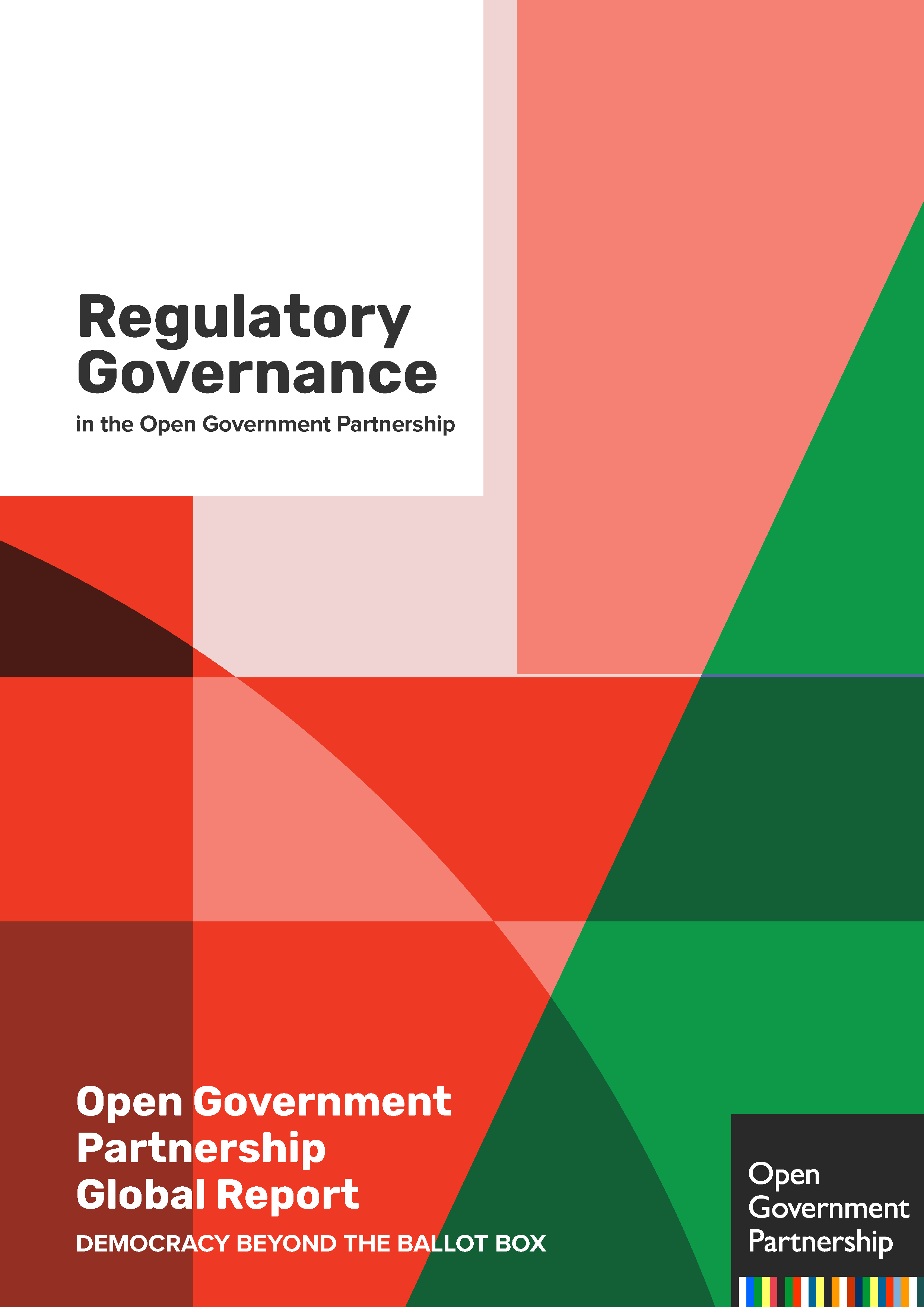
Open Government Partnership | Analytics & Insights Team
World Bank | Global Indicators of Regulatory GovernanceWhen citizens understand and help to shape the rules that govern society, regulations are more effective, business environments are stronger, and levels of corruption are lower. Technical specificatio... Team
When citizens understand and help to shape the rules that govern society, regulations are more effective, business environments are stronger, and levels of corruption are lower. Since the founding of OGP, many members have made commitments to improve regulatory governance. This paper looks at these OGP reforms, together with data from the World Bank’s Global Indicators of Regulatory Governance (GIRG), to achieve the following goals:
- Lay out the basic components of an open regulatory process
- Assess how OGP countries currently fare in implementing those components
- Identify key areas for improvement
- Identify innovations across OGP countries
This paper covers four key areas of regulatory governance where open government and GIRG data collection align: accessing laws and regulations, transparencyAccording to OGP’s Articles of Governance, transparency occurs when “government-held information (including on activities and decisions) is open, comprehensive, timely, freely available to the pub... More of rulemaking, public consultations, and challenging regulations (see Table i for more information about these categories). There are of course other areas of regulatory governance that this paper does not address, such as impact assessments and ex-post reviews. This paper includes all 78 OGP countries but does not analyze commitments made by local OGP members given the national-level focus of the GIRG project.
This paper is part OGP’s Global Report campaign, which can be found here.
- Regulatory Governance in the Open Government Partnership – Full Text | PDF
- Lessons from Reformers:
- New Zealand commits to publishing secondary legislation online
- South Africa’s push for open access to legislation
- Albania publishes local government legislation online
- The European Parliament’s Legislative Train
- Estonia shifts from online consultation to co-creation
- Mexico builds a regulatory ecosystem
- The United Kingdom brings in citizens to review regulations
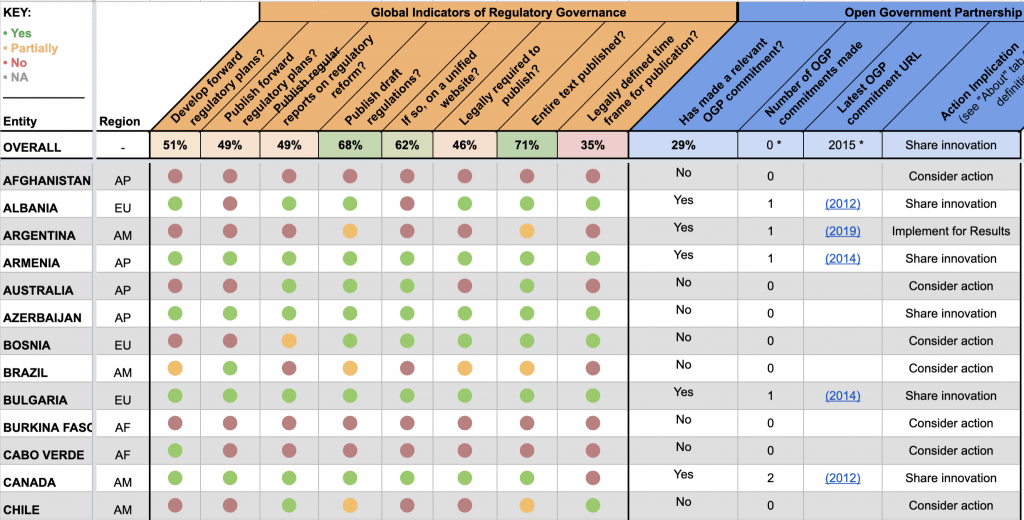
Explore the OGP Regulatory Governance Dashboard for a visual snapshot of how each OGP country is performing according to all of the key indicators of regulatory governance analyzed in this paper.
Contents
Executive Summary
Introduction
1. Accessing Laws and Regulations
Lessons from Reformers: New Zealand commits to publishing secondary legislation online
Lessons from Reformers: South Africa’s push for open access to legislation
Lessons from Reformers: Albania publishes local government legislation online
2. Transparency of Rulemaking
Lessons from Reformers: The European Parliament’s Legislative Train
Lessons from Reformers: Estonia shifts from online consultation to co-creation
3. Public Consultation
Lessons from Reformers: Mexico builds a regulatory ecosystem
4. Challenging Regulations
Lessons from Reformers: The United Kingdom brings in citizens to review regulations
Annex: Reforms in Practice
How to Use This Paper
- Read the key points of the paper: See the “Summary of Findings” for the main points.
- Understand where OGP members stand on regulatory openness: See the “An Overview of Regulatory Governance Across OGP Action Plans” section for an overview of how OGP members perform across all areas of regulatory openness. The four chapters provide more in-depth analysis.
- Learn about strong innovators in the field: See the featured case studies (after chapters 1, 2, and 3) showcasing a strong reform with lessons for other reformers.
- Identify next steps and potential commitments: The start of each chapter includes a maturity model that lists recommendations for future OGP commitments.
- Find examples of reforms from across the world: Reforms showing how governments are implementing steps in the maturity models are highlighted throughout each of the chapters. A subset follows. Other reforms are listed in the “Annex: Reforms in Practice.”
Chapter 1. Accessing Laws and Regulations
- New Zealand: Publishing secondary legislationCreating and passing legislation is one of the most effective ways of ensuring open government reforms have long-lasting effects on government practices. Technical specifications: Act of creating or r... online
- Romania: Providing free and comprehensive access to legislation
- Kenya: Disclosing subnational laws, international treaties, and historical laws
- South Korea: Publishing laws in an easy-to-understand format
- Chile: Reducing language barriers in accessing legal texts
Chapter 2. Transparency of Rulemaking
- Kyrgyz Republic: Building a unified regulatory portal
- Netherlands: Digitizing local and regional regulatory announcements
- South Africa: Publishing annual reports with regulatory developments
- Colombia: Mandating forward regulatory plans
Chapter 3. Public Consultations
- Afghanistan: Consulting local communities on infrastructure projects
- El Salvador: Enabling citizen participationAccording to OGP’s Articles of Governance, citizen participation occurs when “governments seek to mobilize citizens to engage in public debate, provide input, and make contributions that lead to m... More in environmental policy-making
- Croatia: Requiring consultations and reporting on the outcomes
- Latvia: Finding a consensus with civil society in policy development
- Morocco: Raising awareness of participation opportunities at the regional level
Chapter 4. Challenging Regulations
- United Kingdom: Bringing in citizens to review regulations
- Peru: Involving citizens throughout the regulatory life cycle
Good to Know: Defining key terms in regulatory governance
In this paper, regulations are the rules adopted by an executive authority, ministry, or regulatory agency to implement laws enacted by the legislative branch of government. Regulatory provisions are legally binding with respect to officials, individuals, or companies covered by them. Regulations include subordinate legislation, administrative formalities, decrees, circulars, and directives. By extension, the rulemaking process is defined as the process for initiating, drafting, deliberating, and issuing final regulations. As a result, this paper (with the exception of Chapter 1, “Accessing Laws and Regulations”) deals with the enforceable regulatory implementation of laws, rather than with primary laws (passed by the legislative branch of government) themselves.
Table I. Four Areas of Regulatory Governance Studied in This Paper
Global Indicators of Regulatory Governance Topics | Research Questions | |
 | Accessing laws and regulations | Do the private sectorGovernments are working to open private sector practices as well — including through beneficial ownership transparency, open contracting, and regulating environmental standards. Technical specificat... More and general public have free and effective access to the entire (official) collection of reliably updated and complete national laws and regulations of a given jurisdiction? |
 | Transparency of rulemaking | Are officials systematically obligated to issue timely public notice of proposed changes in regulations and publish proposed texts for public review and comments? |
 | Public consultation | Are there minimum standards relating to how, when, and from whom policy-makers seek input on new or amended regulations before issuing final regulations? |
 | Challenging regulations | Can citizens challenge the legal validity of a regulationGovernment reformers are developing regulations that enshrine values of transparency, participation, and accountability in government practices. Technical specifications: Act of creating or reforming ... or regulatory provision? Relatedly, can they challenge an action or decision of a regulator pursuant to a regulation? How? |
Executive Summary
When citizens understand and help to shape the rules that govern society, regulations are more effective, business environments are stronger, and levels of corruption are lower. Since the founding of OGP, many members have made commitments to improve regulatory governance. This paper looks at these OGP reforms, together with data from the World Bank’s Global Indicators of Regulatory Governance (GIRG), to achieve the following goals:
- Lay out the basic components of an open regulatory process
- Assess how OGP countries currently fare in implementing those components
- Identify key areas for improvement
- Identify innovations across OGP countries
This paper covers four key areas of regulatory governance where open government and GIRG data collection align: accessing laws and regulations, transparency of rulemaking, public consultations, and challenging regulations (see Table i for more information about these categories). There are of course other areas of regulatory governance that this paper does not address, such as impact assessments and ex-post reviews. This paper includes all 78 OGP countries but does not analyze commitments made by local OGP members given the national-level focus of the GIRG project.
Summary of Findings
In general, OGP reforms have contributed to important results, particularly around civic participation. Nonetheless, more work is needed to engage citizens earlier in the rulemaking process, strengthen accountability mechanisms, and mainstream open regulatory practices across multiple levels of government, particularly in lower-income countries. More specific findings and recommendations for each of the four key areas of regulatory governance studied in this paper follow.
Accessing laws and regulations
- State of play: OGP members are strongest in this area. Most countries make laws and regulations publicly available, although the quality of the information is an issue. Keeping legal databases up to date is also a challenge.
- Recommendations: Maintain a comprehensive, searchable, and free-to-access central website for all existing laws and regulations. Eliminate restrictions on data usage, and ensure regular updates of the information. Ensure disclosure at the local level as well.
Transparency of rulemaking
- State of play: Several countries have made OGP commitments in this area. However, most OGP countries still do not publish forward regulatory plans, particularly in the Americas and Africa, where relevant commitments are generally lacking.
- Recommendations: Publish forward regulatory plans and regulatory drafts on unified portals that enable citizens to provide feedback. Ensure that citizens can follow regulations from development through to adoption.
Public consultations
- State of play: Most OGP members have notice-and-comment systems in place (albeit not all legally enforceable), but many do not provide a reasoned responseOngoing dialogue between stakeholders during the development of an OGP action plan is critical to the plan’s success. Specifically, communicating back to stakeholders the ideas received and decision... to citizen input, much less through dedicated websites.
- Recommendations: Adopt laws that mandate notice-and-comment procedures, set minimum standards for inviting public input, and establish credible oversight systems. Document public input, and provide responses prior to adoption of final regulations.
Challenging regulations
- State of play: Citizens in many OGP countries cannot challenge regulations on procedural grounds. In addition, only two OGP members have made commitments in this area to date.
- Recommendations: Adopt legislation that provides the legal basis to challenge regulations if not developed through open processes or if discriminatory. Publish information about the process and enable citizens to also challenge regulations on substantive grounds.
Introduction
The Case for Transparent and Participatory Rulemaking Processes
Transparency and accountability in government actions are increasingly recognized as central to economic development and political stability.[1] When citizens have effective access to the laws and regulations that govern their society and also have a role in shaping them, they are more likely to comply with those laws and regulations. Corruption is less common, and the quality of laws and regulations can significantly improve. In addition, citizen access to the government rulemaking process is central to the creation of a business environment in which investors make long-range plans and investments.[2]
Public participation in the rulemaking process can enhance transparency and strengthen both the quality and legitimacy of regulation – an important precursor for trust. Apart from being ends in themselves, these outcomes enhance fair and equitable implementation and enforcement of laws and regulations, which can improve equality of opportunity and level the playing field in all sectors. This is particularly important in key sectors like health care, energy, and transportation.[3] When citizens know and can influence the rules that govern their society, in addition to increased compliance with the laws by citizens and less corruption in the government,[4] public institutions tend to be more politically stable.[5] And if the new regulations are well-crafted and have clear benefits for society and/or business communities, transparent rulemaking achieves better compliance with and support for the scope and application of new laws.[6] Undeniably, good governance depends on stakeholder involvement.[7]
In the 20th century, many governments started moving in the direction of more open regulatory processes. Beyond consulting citizens during the development of regulations, several governments began recognizing the legal rights of citizens to challenge decisions and actions by regulatory officials. In the past few decades, the rise in e-government systems has provided governments more efficient ways to improve public participationGiving citizens opportunities to provide input into government decision-making leads to more effective governance, improved public service delivery, and more equitable outcomes. Technical specificatio... in rulemaking processes. In the early 2000s, the governments of countries such as Australia, the United Kingdom, and the United States began posting the text of proposed regulations online for citizens to read and comment on. Regulators also realized the benefit of having open dialogues with stakeholders to discuss the areas of concern and receive their input. Mexico’s government passed a law in 2002 requiring federal ministries and agencies to make all draft regulations publicly available on their websites.
Measuring and Describing Regulatory Governance
The World Bank’s Global Indicators of Regulatory Governance (GIRG) project is an initiative of the World Bank’s Global Indicators Group that explores how governments interact with the public when shaping regulations. Building on the existing literature and with the aim of extending the analysis to developing countries, the project charts the extent to which – and how – citizens, civic organizations, and business associations around the world engage with governments on the content and scope of new regulations.
Central to GIRG is an effort to capture how rulemaking happens in practice in different jurisdictions, not just in terms of what is required by the letter of the law. Functionally, the project seeks to identify where governments offer citizens opportunities to voice their concerns about proposed and existing regulations meant to implement legislation. Plus, the project helps policy-makers identify how their government’s regulatory practices compare with those of others in the areas of transparent and inclusive rulemaking.
To gather the data, the GIRG project team developed a questionnaire with input from academicians, regulatory governance experts, and government practitioners. The team shared the questionnaire with more than 1,500 regulatory experts from across the world. After validation and verification, the resulting data cover 186 countries[8] (and the European Union), including all 78 OGP member countries. The data cover six areas of regulatory governance. The main chapters of this paper study four of these in-depth.
In terms of limitations, the GIRG project does not necessarily capture the quality of existing rulemaking processes and practices. For example, while the data set captures whether rulemakers engage stakeholders in consultation around proposed regulations, it does not reflect the quality of such discussions or the extent to which the comments lead to changes in proposed regulations. The data also do not reveal cronyism, nepotism, corruption, and bribery. Furthermore, the questionnaire asks about national-level regulatory practices at large, without focusing on any specific sector. Regulatory practices can differ from industry to industry and between national and regional levels of governments. More details about the methodology, as well as the full data set, are available online.
Structure of this Paper
The following short section “An Overview of Regulatory Governance Across OGP Action Plans” provides an overview of how OGP members are addressing regulatory governance through their action plans. The four main chapters of this paper, which focus on the topics covered by the GIRG project, continue afterward. At the end of the paper, the Annex provides short summaries of relevant reforms, grouped by chapter.
Feature: An Overview of Regulatory Governance Across OGP Action Plans
All OGP-participating governments are required to co-create a two-year action plan with citizens. These OGP action plans contain concrete commitments to advance transparency, participation, and public accountability in government. Many of these commitments fall into a category that OGP calls open policy-making, which refers to openness in government decision-making.[9] Although the rest of the paper focuses on the aspects of regulatory governance covered by GIRG, this section looks closely at this broader set of OGP commitments.
Open policy-making is a common focus of OGP commitments
Most OGP members have made at least one commitmentOGP commitments are promises for reform co-created by governments and civil society and submitted as part of an action plan. Commitments typically include a description of the problem, concrete action... related to open policy-making. Nearly 10 percent of all OGP commitments relate to open policy-making. Looking across regions, these commitments are most popular in Europe, although many OGP members in the Americas have also made relevant commitments.
OGP members are focusing on improving consultations
If grouped according to the four GIRG topics mentioned earlier, most OGP commitments fall into the category of “public consultation.” Figure I shows the distribution of commitments according to the GIRG categories. Specifically, 42 countries have made an OGP commitment aimed at improving consultations around regulations. Far fewer have made a commitment related to challenging regulations (only Latvia and Peru).
Figure I. OGP Commitments Related to Public Consultations Are Most Common
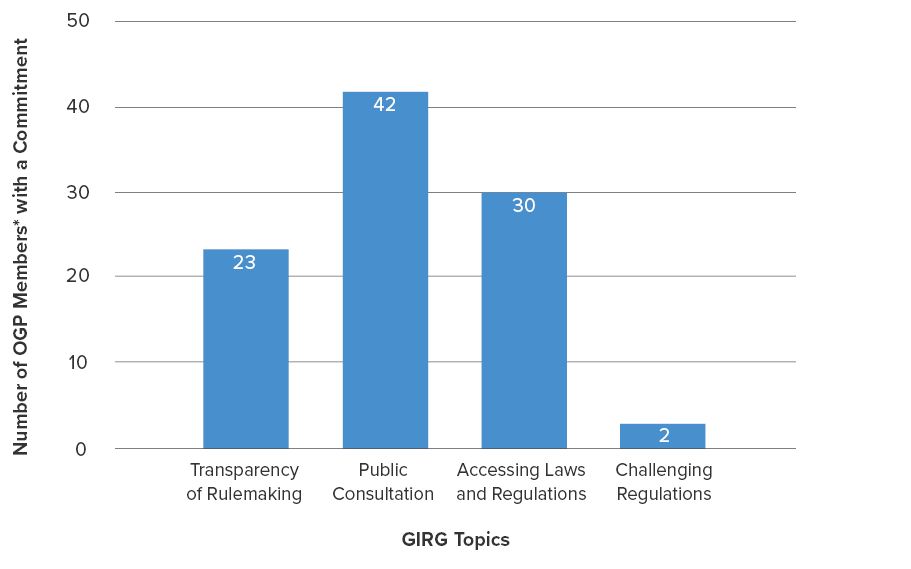
*Note that in this case the analysis includes OGP local members
Source: OGP commitment database, N=71
Although OGP commitments in general tend to focus on information disclosure, the majority of open policy-making commitments relate to civic participation. Figure II visualizes the distribution of OGP commitments on the three core OGP values: access to information, civic participation, and public accountabilityAccording to OGP’s Articles of Governance, public accountability occurs when ”rules, regulations, and mechanisms in place call upon government actors to justify their actions, act upon criticisms ... More. These commitments clearly focus more on engaging citizens than the typical OGP commitment. This may be a result of the technical difficulty involved in publishing laws and regulations, but it is nonetheless an encouraging sign of how OGP members are going beyond transparency-only reforms in this area. However, open policy-making commitments are less likely than OGP commitments in other areas to advance public accountability (i.e., create or improve concrete opportunities to hold officials answerable to their actions).
Figure II. Open Policy-Making Commitments in OGP Tend to Deal with Civic Participation
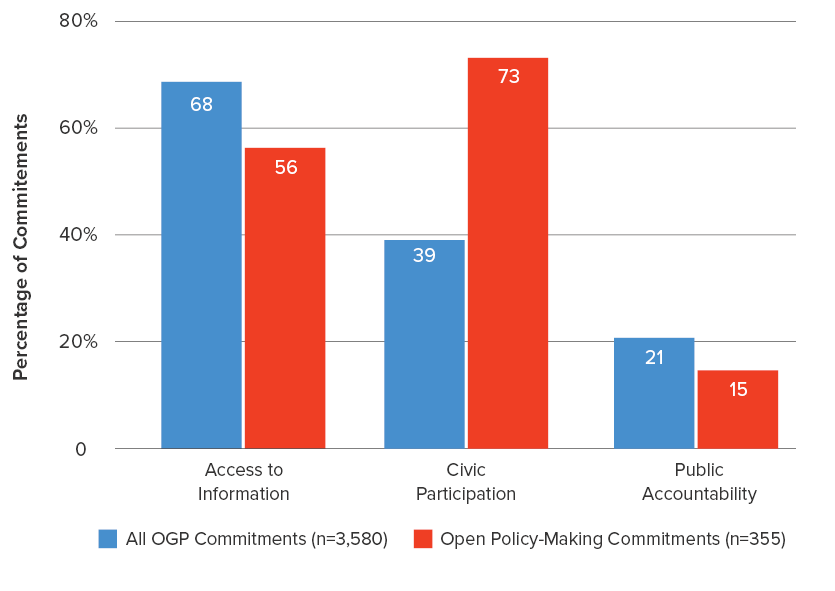
Open policy-making commitments in OGP go beyond GIRG’s largely regulatory framework
Many OGP commitments go beyond the areas covered by GIRG. In general, these commitments fall into the following categories:
- Issue-specific participatory processes: Nearly half of the commitments focus on involving the public in the creation of a single policy or plan or within a particular government agency. These commitments are not directly comparable to GIRG because they are not streamlined across government.
- Training and capacity-building: Some commitments focus on training government officials on how to make regulatory processes more participatory. Others train citizens on how to better participate in open regulatory processes.
- Legislative openness: GIRG covers the publication of laws, but many OGP commitments go further, including proposals to publish draft laws, data on voting, and international treaties. Some commitments also aim to better involve citizens in the process of drafting legislation.
- Publishing information about other parts of the lifespan of a regulation: This includes commitments that track the implementation status of regulations.
- Lobbying: Many OGP commitments aim to increase the transparency of those who directly influence the policy-making process. Many of these efforts cover both legislative and administrative interactions. This is also an active area of work in the OGP community.
- E-petitions: Many OGP commitments seek to create channels for citizens to directly petition their governments. For example, the Ravaalgatus.ee platform in Estonia allows citizens to create, digitally sign, and send proposals directly to the Parliament for consideration. (See “Lessons from Reformers: Estonia” at the end of Chapter 1).
Open policy-making commitments shine in Asia Pacific and the Americas
The Independent Reporting Mechanism (IRM)The Independent Reporting Mechanism (IRM) is OGP’s accountability arm and the main means of tracking progress in participating countries. The IRM provides independent, evidence-based, and objective ... assesses the quality and implementation of OGP action plans and collects data on commitments’ levels of ambitionAccording to OGP’s Articles of Governance, OGP commitments should “stretch government practice beyond its current baseline with respect to key areas of open government.” Ambition captures the po..., completionImplementers must follow through on their commitments for them to achieve impact. For each commitment, OGP’s Independent Reporting Mechanism (IRM) evaluates the degree to which the activities outlin... More, and early resultsEarly results refer to concrete changes in government practice related to transparency, citizen participation, and/or public accountability as a result of a commitment’s implementation. OGP’s Inde... More. According to these metrics, roughly half of open policy-making commitments are ambitious — or have the potential to change the status quo. Nearly two-thirds were substantially completed, and one in five led to significant improvements in government openness. These rates are roughly average compared to OGP commitments on other topics. Open policy-making commitments are especially strong in particular regions. For example, in Asia Pacific, they tend to be more ambitious than other commitments. Similarly, in the Americas, they are more likely to lead to significant changes in government practices than other commitments.
OGP countries are making laws and regulations available but without sufficient citizen involvement
Following the model of OGP’s Global Report, OGP members can be categorized based on the strength of their third-party score (GIRG in this case) and whether they are using the OGP platform to improve. The following table, Table III, shows that OGP members perform best in publishing laws and regulations (see Chapter 1, “Accessing Laws and Regulations” for more details). Performance is weaker in the transparency of rulemaking (i.e., public notice of upcoming changes). OGP members fare worst in consulting citizens regularly on draft rules, but many have made OGP commitments to improve practice in this area. The reason for such poor performance is likely the lack of legal obligation that requires officials to follow stipulated public notice-and-comment requirements, provides minimum standards of compliance, and establishes oversight systems to monitor compliance.
Figure III. OGP Countries Perform Best in Publishing Laws and Regulations
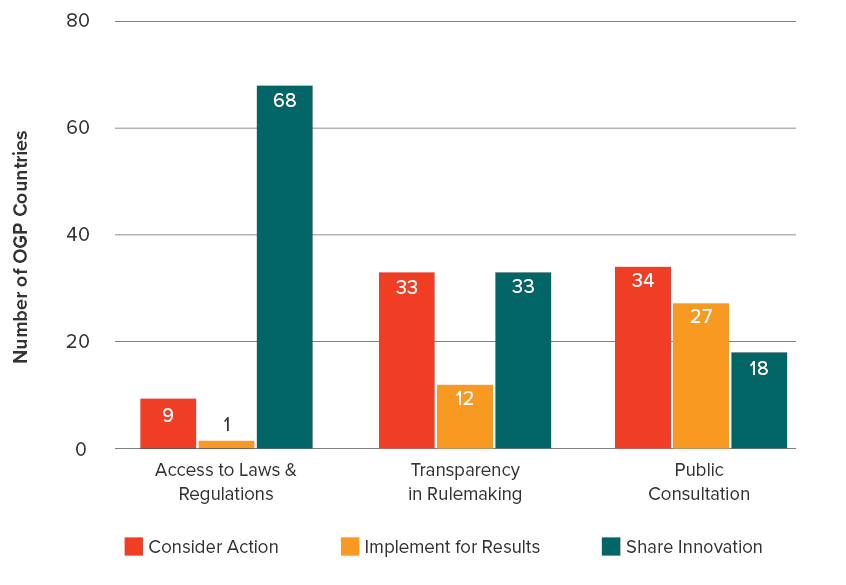
Source: Global Indicators of Regulatory Governance and OGP databases, N=78
Key
- Share Innovation: These countries have the maximum GIRG score in the respective policy area. As leaders, they may consider playing a peer-support role by sharing their experiences and innovations with others in OGP, if they are not already doing so.
- Implement for Results: These countries have not attained the maximum GIRG score in the respective policy area but have made OGP commitments to improve their performance. Having demonstrated political commitment through OGP, the next step for these countries is to ensure that implemented commitments have maximal impact.
- Consider Action: These countries have not attained the maximum GIRG score in the respective policy area and also have not leveraged their OGP action plans to address the issue. They may consider reforms in the respective policy area, either within or outside of the OGP framework.
Strong OGP co-creation is not associated with strong performance on GIRG
A key element of OGP is co-creation of action plans by government and civil society. The IRM assesses the level of public influence during the process of developing each action planAction plans are at the core of a government’s participation in OGP. They are the product of a co-creation process in which government and civil society jointly develop commitments to open governmen... (e.g., whether citizens were consulted and received a response to their input). An analysis of this IRM data and the GIRG public consultation scores reveals that there is no statistical relationship between the two indicators. In other words, the strength of OGP co-creation is not indicative of strong consultation practices across government. This is a significant finding that points to a clear recommendation: OGP members can do more to mainstream open regulatory processes across government.
Sometimes, the OGP process is more participatory, contrasting sharply with general government practices. For example, the government of Argentina developed its 2017–2019 OGP action plan in close collaboration with citizens through in-person workshops, online crowdsourcing of ideas, and carefully documented consultations. Nonetheless, according to GIRG, this type of participatory process is not yet common across the Argentinean government. In other cases, OGP countries have participatory regulatory processes that are mandated by law but that do not translate into co-creation of OGP action plans. In both examples, governments should share innovative approaches across the administration to mainstream open regulatory processes.
1. Accessing Laws and Regulations
The World Bank’s Global Indicators of Regulatory Governance (GIRG) measure the accessibility of laws and regulations. Open and effective access to laws is pivotal to understanding and applying the rule of law. It is considered a crucial component of any modern legal system, as it encourages predictable enforcement and transparency, promotes the rule of law, and generates political stability (see Figure 1.1). In a scenario where citizens know and understand the rules that govern their society, they are more likely to comply with those rules. If people have efficient, effective, and free access to the country’s laws and regulations, they are in a better position to exercise their legal rights, plan and predict their actions, and efficiently resolve any arising problems and disputes. This is why improving legislative openness is an important area of work for OGP as well.
Figure 1.1. Access to Laws and Regulations Is a Core Pillar of Good Governance
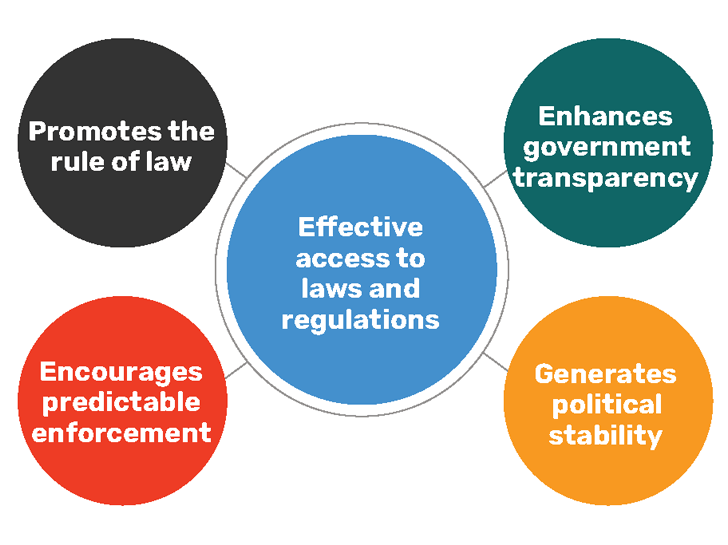
Clear and transparent legal and regulatory structures also enable local businesses to thrive without fear of selective, arbitrary, or capricious actions and decisions by regulatory officials. Consider a small enterprise trying to comply with formalities outlined in local regulations, such as fee schedules, corporate regulations, and taxPlacing transparency, accountability, and participation at the center of tax policy can ensure that burdens are distributed equitably across society. Technical specifications: Commitments related to c... requirements. When countries facilitate effective access to laws and regulations, compliance is easy and straightforward, saving time and money for both businesses and authorities. In turn, when tax regulations are ambiguous and regulatory officials use an opaque process to interpret, apply, and enforce them, legal and regulatory provisions are likely to be subject to multiple interpretations by officials in the same agency. In such an environment, companies must spend extra time attempting to comprehend the requirements and often must seek expensive legal assistance to be able to navigate and accurately interpret local tax compliance regulations. For entrepreneurs, the lack of legal certainty is overly burdensome, costly, and unproductive, as well as a sign of a weak pro-business environment and is one of the main reasons for disincentivizing private investment.
In the absence of regulatory transparency, rent seeking and shadow deal making are likely to become the norm and accepted culture of regulatory governance, or the modus operandi. For instance, when laws are not easily accessible, resolution of court disputes largely depends on subjective legal interpretations by judges, which may be greatly at odds with how an agency is interpreting, applying, and enforcing its own laws and regulations. Furthermore, research demonstrates that obstacles and constraints to accessing applicable laws in some economies deter legitimate foreign investors – who want to comply with laws honestly and transparently – and also weakens trade policies.[10] Foreign investment tends to be higher in economies where legal frameworks ensure transparency, predictability, and adherence to the rule of law.[11]
The following maturity model summarizes the key actions that OGP members should implement to ensure free and easy access to their current laws and regulations.
Maturity Model for Future Actions: Effective Access to Official and Full Versions of Laws and Regulations |
|
|
|
|
|
|
Note: These actionable items are discussed in greater detail further in the chapter.
Good to Know: How the GIRG project assesses publication of laws and regulations The GIRG data assesses transparency and ease of access to laws and regulations in all 78 OGP member states by asking the following questions:
The answers to these questions provide a picture of the overall availability of laws and regulations in each country. It is important to note that the GIRG data do not delve into more methodologically difficult questions of data quality, such as whether the information is useful, usable, or used. For example, countries may publish legal and regulatory information that is incomplete, inconsistently updated, or made up of unofficial versions that contain errors. The information may also not be searchable or user-friendly. In effect, legal and regulatory information may be available yet unreliable in ways that the data cannot fully capture. According to experts,[12] these data quality issues are a particular challenge in many African countries, as noted also by organizations such as the African Legal Information Institute. |
Most OGP members provide full and effective access to an official collection of laws and regulations
Reassuringly, out of 78 OGP countries, 68 maintain unified websites where laws are made publicly accessible in a single place (see Table 1.1). Additionally, 23 countries have made commitments through the OGP platform to improve citizen access to current laws and regulations, such as Romania:
- The Romanian government provided free and comprehensive access to legislation for all its constituencies. Previously, access to consolidated national legislation was only available for a fee, and the official gazette was only available free of cost for a ten-day window. With this commitment, citizens now have unlimited, free access to these resources via an online government portal, marking a major improvement to Romanian citizens’ access to information. Additionally, during the commitment’s implementation, in response to civil society concerns on the role of intermediaries in the process, a new law was drafted (195/2016) to ensure permanent and free access to the official gazette. This commitment is also aligned with the EU and national-level standards, which designate free access to legislation as essential to legal compliance.
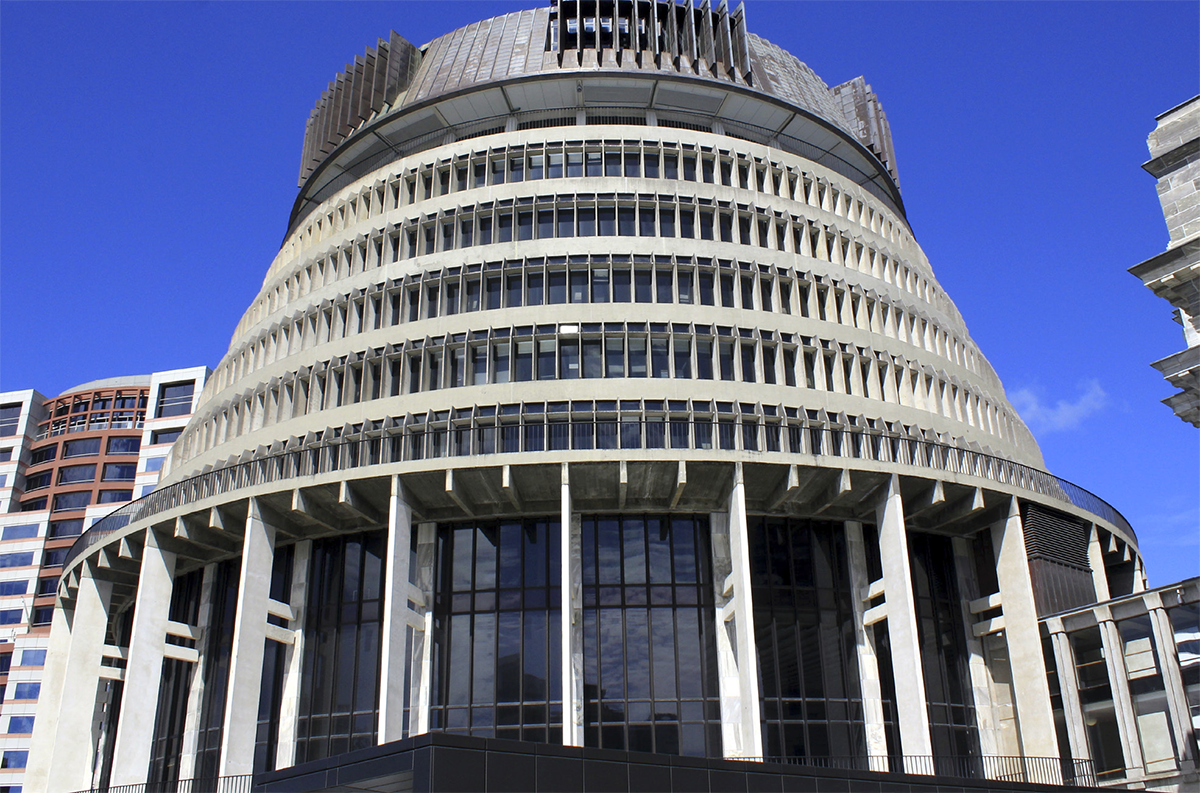 New Zealand Parliament. Photo by: asanojunki0110 Lessons from Reformers: New Zealand commits to publishing secondary legislation online Although New Zealanders prior to 2016 could access their country’s legislation for free on legislation.govt.nz, the same was not true for secondary legislation (mostly rules and regulations), which were often unavailable in machine-readable formats or not available at all. As a result, as part of its 2016–2018 OGP action plan, the government committed to centralizing all official primary and secondary laws online – including those drafted by Crown entities, statutory bodies, and other nongovernmental bodies. Implementation has required a multitiered process. An initial step involved conducting a legal review to identify acts that constitute secondary legislation as opposed to mere administrative provisions. The Parliamentary Counsel Office (PCO) in charge also carried out external research to better understand how people access and use secondary legislation. These insights will inform later stages of the project. As an intermediate next step, in its follow-up 2018–2020 OGP action plan, the PCO committed to listing all secondary legislation on the main legislation website with hyperlinks to the location of the text. Beyond the importance of providing easy access to all legislation online, New Zealand’s step-by-step approach is also a model for other countries looking to integrate long-term ambitious reforms into the two-year OGP action plan cycle. |
Table 1.1 Most OGP Countries Provide Access to Laws and Regulations
ACCESSING LAWS AND REGULATIONS | ||
Best Performers | Weak Performers | |
Full access (score: 1) | Some to no access (score: 0–0.5) | |
OGP commitment | Albania, Argentina, Armenia, Azerbaijan, Dominican Republic, Estonia, Finland, France, Georgia, Honduras, Italy, Mexico, Moldova, the Netherlands, New Zealand, Paraguay, Portugal, Romania, Slovak Republic, Serbia, Spain, United Kingdom, United States | Liberia |
No OGP commitment | Afghanistan, Australia, Bosnia and Herzegovina, Brazil, Bulgaria, Burkina Faso, Cabo Verde, Canada, Chile, Colombia, Costa Rica, Croatia, Czech Republic, Denmark, El Salvador, Germany, Greece, Indonesia, Ireland, Israel, Jamaica, Jordan, Kenya, Korea (Republic of), Kyrgyz Republic, Latvia, Lithuania, Luxembourg, Malta, Mongolia, Montenegro, Morocco, North Macedonia, Norway, Pakistan, Panama, Papua New Guinea, Peru, Philippines, South Africa, Sri Lanka, Sweden, Tunisia, Ukraine, Uruguay | Côte d’Ivoire, Ecuador, Ghana, Guatemala, Malawi, Nigeria, Senegal, Sierra Leone, Seychelles |
However, a handful of OGP countries need to do more to ensure basic citizen access to current laws. Ten OGP countries provide partial or no access to adopted laws and regulations. Eight of the countries are in Africa while two are in the Americas. Of the ten countries, only Liberia has made a commitment to address this issue. Specifically, in its 2017 OGP action plan, recognizing that the public is largely unaware of the status of critical bills, the government committed to 1) creating a database to track laws and bills in the legislature, 2) providing regular reports with this information, and 3) hosting roundtables to enable discussion. Other countries could consider similar efforts to improve the accessibility of laws and regulations.
 Parliament Building in Cape Town. Photo by dpreezq Lessons from Reformers: South Africa’s push for open access to legislation South Africa particularly benefited from providing open access to legislation and set an example that other countries can follow. When a government provides open access to laws, informed citizens become better equipped to participate in decisions demanded by a democratic system. During the apartheid era in South Africa, access to information on social and economic affairs was purposefully suppressed. Laws were published in the government gazette known as Staatskoerant with very limited access. Opposition groups severely criticized the general secrecy of government, which enabled the gross violation of human rightsAn essential part of open government includes protecting the sacred freedoms and rights of all citizens, including the most vulnerable groups, and holding those who violate human rights accountable. T.... After the election in 1994, the right to access information was embedded in the Constitution, and in 2001, the Promotion of Access to Information Act came into force. The act established the constitutional right of access to any information – held by the government or others – necessary for the exercise or protection of rights. Today, the South African government gazette makes legal texts available to the public in printed form as well as electronically and has played a key role in supporting democratic stability and promoting the rule of law in the country. Free access to information was crucial for educating political activists as well as civil society and bringing about positive political change in the country.[13] Now all South African legislation is publicly available through the Parliament’s website. Many thanks to former OGP Steering CommitteeThe Steering Committee is OGP’s executive decision-making body. Its role is to develop, promote and safeguard OGP’s values, principles and interests; establish OGP’s core ideas, policies, and ru... co-chair Mukelani Dimba for his contributions to this story. |
Official gazettes are an important mechanism for publishing laws and regulations
Access to laws and regulations through an official gazette or similar publication is an important way to publicize legal texts. A gazette is a viable mechanism to keep citizens abreast of the current laws, especially in countries with low levels of Internet penetration. Forty-nine OGP countries make the laws available through both unified websites (government-run) and official printed gazettes (see Figure 1.2). Eight OGP countries – Côte d’Ivoire, Ecuador, Ghana, Malawi, Nigeria, Sierra Leone, Serbia, and Seychelles – only use official gazettes to disseminate laws and regulations to the general public. In the case of Nigeria, laws passed by the National Assembly are available in the federal gazette (Federal Republic of Nigeria Official Gazette), while state laws are available in the respective state gazettes. In most African countries (and in many others), laws are not enforceable until they are published in the gazette. Thus, it represents a critical legal role in addition to dissemination. Additional country-specific findings follow:
- Many countries publish gazettes online. In Moldova, the official gazette[14] is usually published twice a week (hard copy only). It contains all the amendments to the laws and regulations in effect. In many countries, especially high-income ones, gazettes can be accessed electronically and free of charge. Some examples of such countries include Australia, Germany, Serbia, Sri Lanka, and Tunisia.
- In Greece, the National Printing House is responsible for issuing the Government’s Gazette. The gazette comprises all current laws and other regulatory acts, such as presidential decrees and ministerial decisions. It is available free of charge, but an e-copy has to be ordered by email.
However, gazettes can be futile if they do not include up-to-date information or if citizens are unaware of their existence. In Afghanistan, the official gazette published by the Ministry of JusticeTo address barriers that prevent citizens from having their justice needs met, OGP participating governments are working to expand transparency, accountability, and inclusion into all systems of justi... can only be bought in stores (although the government also maintains a website that enables free access to laws). Storage of paper copies of gazettes can also be problematic. For example, in Seychelles, it is difficult to obtain historical copies of gazettes (i.e., more than five years old). The local government also finds the effort to consolidate all the laws and regulations to be costly and labor-intensive. Therefore, major legal compilations and revisions take place only once about every ten years. In many African countries, the updates are even less frequent.
Figure 1.2 Most OGP Countries Make Primary Laws Available in a Single Place
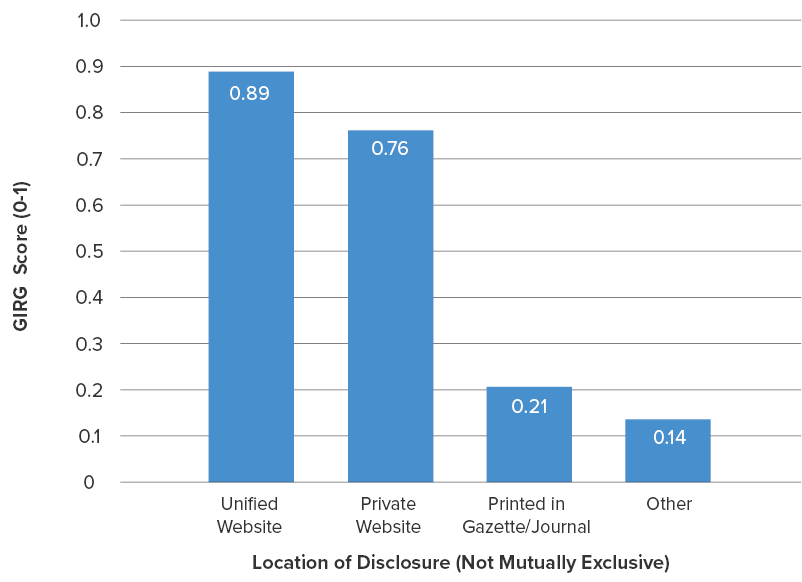
Source: Global Indicators of Regulatory Governance database, N=78.
Nearly 90 percent of OGP countries use a unified website to publish laws and regulations
Maintaining freely available, searchable, and up-to-date websites containing complete and official versions of all existing legislation is a best practice that all OGP countries should strive for. Studies suggest that initial costs of publication may contribute to preventing subsequent additional and sometimes burdensome costs derived from litigation as a result of ignorance of the law. In general, OGP countries make both primary and secondary laws available to constituencies in a single place, most often through a unified government-run website (see Figure 1.2). Examples of strong performers follow:
- Australia is one of the champions of transparent and effective information sharing. The Australian government has developed several initiatives to have laws freely available online to the general public. The Federal Register of Legislation is a comprehensive government website for the public to access Australian laws and related legislation. The website provides accessibility to full texts of laws as well as electronic copies of the government’s gazette all the way back to 1901. It includes acts of Parliament, act compilations, regulations, administrative arrangement orders, legislative instruments, explanatory statements, and other instruments. The online government website was implemented in accordance with the Legislation Act 2003, which provided a comprehensive regime for the management and dissemination of laws and mandated public online access to authorized versions of legal texts, associated documents, and information.
- Kenya is a noteworthy example of enhancing electronic dissemination of primary and secondary legislation. The Kenya Law, a 2001 state-funded initiative, implemented an online system for legal reporting aimed at 1) revising, consolidating, and publishing Kenyan laws; 2) monitoring and reporting the development of Kenya’s jurisprudence; and 3) providing universal access to the county’s legal information. The Kenya Law website features a comprehensive database of laws, which is easily accessible and searchable. It also provides a substantive collection of subnational laws and international treaties. In addition, through the online platform, users can access the official country gazette as well as historical legal documents. More recently, the government has begun using an open, nonproprietary format to consolidate and publish legislative documents and is among only a handful of African governments that consolidates and publishes its own legislation.
- South Korea uses a comprehensive online platform to provide access to laws. Over a decade ago, the Ministry of Government Legislation of South Korea implemented the National Law Information Center, which is essentially an online platform that provides integrated and free access to Korean legislation, including statutes, administrative regulation, and local governments’ ordinances, as well as regulations and statutory interpretation cases. The legal database is organized by legislative bodies and by key regulatory areas. Most recent amendments are featured on the homepage and are searchable by both date and subject. The center also offers a legal information service that summarizes the content of specific laws and regulations in an easy-to-understand story-telling format so that citizens can better interpret relevant legal provisions.
- The European Union’s online platform, EUR-Lex, provides free legal information at both supranational and national levels. Treaties, directives, regulations, decisions, and consolidated legislation are all available electronically. Moreover, the website contains European Union case law, international agreements, summaries of legislation, and other public documents. It also provides direct access to the official journal. The website is administered by the European Union e-Law Working Party, which is composed of representatives of the 28 member states, the EU Publication Office, the EU Commission, and the General Secretariat of the EU Council.
The private sector plays an important role in providing access to laws and regulations
Private sector legal databases provide access to regulations in some countries, but they are not a magic bullet. Free access to a reliably updated, official, and comprehensive collection of laws and regulations is a basic public good that governments – not the private sector – are responsible for providing. Problems of quality, access, and sustainability arise when governments outsource this function (or have no role in the system). For example, privately run platforms may contain errors (due to lack of official reviews) and may not be systematically updated. In addition, introducing fees deprives the most vulnerable from accessing the laws they need to protect their rights. A provider can also go out of business or otherwise interrupt access. Beyond these issues, outsourcing to private companies often prevents the transfer of knowledge, skills, and capacity that government officials need to perform these functions.
Despite these drawbacks, fourteen OGP countries – Bulgaria, the Czech Republic, Germany, Denmark, Israel, Italy, Sri Lanka, Lithuania, Norway, Panama, Philippines, Papua New Guinea, Serbia, and Ukraine – have private sector websites that compile large legal databases of both primary and secondary laws. Among the 78 sampled OGP countries, most private legal databases are in Europe, followed by Asia Pacific (see Figure 1.3). This pattern could be demand-driven and subject to the availability of paying clients to maintain operational business models.
Figure 1.3. Private Sector Legal Databases Are Most Widespread in Europe
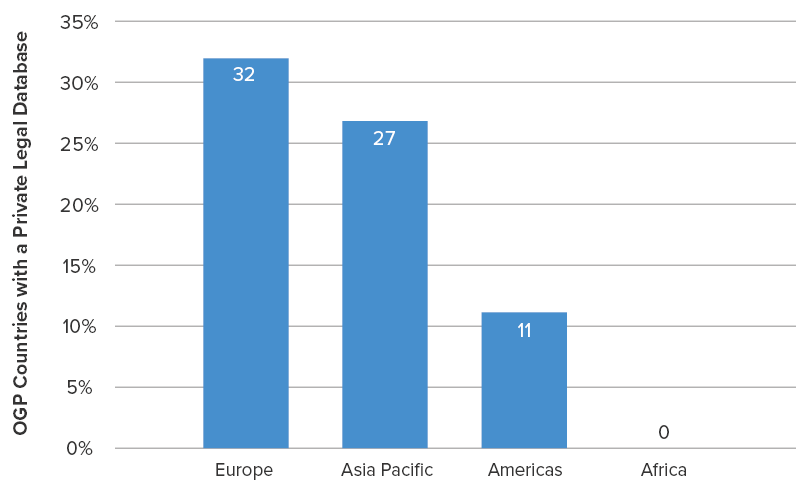
Source: Global Indicators of Regulatory Governance database, N=78.
Worldwide, a number of private companies specialize in offering prepaid online legal databases. This is a thriving industry that caters to the needs of attorneys, judges, law students, accountants, and entrepreneurs. Private platforms provide efficient and easy access to search tools that allow rapid identification of specific legal materials. Privately operated legal databases enable users to effectively retrieve all the relevant information pertinent to a specific query, including legislation, case law, and secondary materials, such as scholarly works.
One of the leading global data providers in the industry is the LexisNexis Group. LexisNexis is a US-based corporation that provides services for 175 jurisdictions, offering one of the largest electronic databases for legal information and access to five billion searchable documents from more than 40,000 legal, news, and business sources. The company also offers business information solutions to professionals in a variety of areas, including legal, corporate, government, law enforcement, tax, accounting, and academic, as well as risk and compliance assessments. However, as discussed earlier, privately provided sources of laws and regulations should be a complement to – not a replacement of – the official source of legislative texts. In many cases, private services are stepping in because governments are not fulfilling an important governance function, which – perhaps counterintuitively – can hinder access for a broad swath of the population, impact the reliability of information, and introduce conflicts of interestA key part of anti-corruption involves preventing or revealing conflicts of interest — when a public official is in a position to use public office for personal or private gain. Technical specificat....
OGP countries may benefit from collaboration with private platforms. In many jurisdictions, proliferation of prepaid legal online platforms is a response to inefficiency, inaccuracy, or incompleteness of government-run websites. However, OGP countries could benefit from active collaboration with private data aggregation platforms to improve access to information for their citizens. For example, private platforms can help to channel information from different government websites into a single-search source engine. They can also offer tools to help users better understand legislation. However, in these cases, it is important for the government to retain control of key information around its laws and regulations to ensure free and comprehensive access.[15] See “Good to Know: Nongovernmental actors play a key role in open access to laws” for a discussion of the important role that civil society plays in this area. Also, see “Lessons from Reformers: Albania” at the end of this chapter for an example of civil society spearheading the publication of government legislation.
Good to Know: Nongovernmental actors play a key role in open access to laws In some countries, open access to laws is provided by academia or independent organizations. These types of initiatives, led mostly by universities and legal advocacy groups, are known as the “Legal Information Institutes” or “the Free Access to Law Movement.” The concept, which was first created at the Cornell University Law School in 1992, is that legal information should be freely accessible and not subject to monopolistic practices. In these cases, legal information is published from different sources in a collaborative data sharing effort from different networks. For example, the Asian Legal Information Institute provides over 300 databases from 28 countries in Asia. Similarly, the Commonwealth Legal Information Institute serves as a repositoryAccess to relevant information is essential for enabling participation and ensuring accountability throughout the OGP process. An OGP repository is an online centralized website, webpage, platform or ... of legal information, covering over 1,400 databases from 60 Commonwealth and common law jurisdictions. Other examples include the African Legal Information Institute, a project of the Democratic Governance and Rights Unit at the University of Cape Town and the Pacific Islands Legal Information Institute, an initiative of the University of the South Pacific School of Law. |
Keeping legal databases up to date is a challenge for many OGP countries
The ways in which OGP countries update their legal databases show considerable variation (see Table 1.2). The most common practice is to publish an updated law within two to seven days after its enactment. This is the case in over 50 percent of OGP countries. Bulgaria makes legal updates on the same day that the State Gazette is printed and distributed. In Estonia, updates take place within seven days upon signature or proclamation, while systems in the UK ensured that the legislation related to Brexit was uploaded, indexed, and accessible the same day it was enacted.
- Some countries, such as Peru, have implemented automated systems allowing for immediate publication of legal amendments. The Peruvian Ministry of Justice and Human Rights makes same-day updates to all the amended laws and regulations through the Peruvian Legal Information System (SPIJ). The updates are also reflected in the official gazette “El Peruano.”
- In other OGP countries, it takes one to three weeks to update amendments in legal publication systems. This is the case of Mongolia, where new laws and regulations are published in the State Bulletin within fourteen days after their adoption. In eight OGP countries – Burkina Faso, Côte d’Ivoire, Ghana, Guatemala, Liberia, Papua New Guinea, Senegal, and Sierra Leone – lack of regular updates of legal databases is particularly problematic.
Table 1.2: Frequency with which Countries Update Legal Databases
2 weeks or less | within 1 month | more than 6 months |
Argentina, Armenia, Australia, Azerbaijan, Bulgaria, Canada, Chile, Colombia, Croatia, Denmark, Estonia, Finland, France, Georgia, Germany, Greece, Israel, Luxembourg, North Macedonia, Malta, Mexico, Morocco, the Netherlands, New Zealand, Norway , Pakistan, Paraguay, Peru, Romania, Sweden, Ukraine, United Kingdom, Uruguay | Afghanistan, Czech Republic, Dominican Republic, El Salvador, Jordan, Kenya, Montenegro, South Africa | Bosnia and Herzegovina, Burkina Faso, Cabo Verde, Côte d’Ivoire, Ecuador, Ghana, Guatemala, Honduras, Jamaica, Liberia, Malawi, Papua New Guinea, Senegal, Sierra Leone |
Source: Global Indicators of Regulatory Governance database.
Areas for innovation: Moving toward comprehensive and user-friendly disclosure
Providing effective access to all laws and regulations from different levels of government is an area for improvement across OGP countries. Many countries have unified websites that consolidate only national-level regulations, while there is no platform where regional and local regulations are accessible in a single place. Albania is an exception:
- Albania published local government acts on a single portal. As part of Albania’s 2016 OGP action plan, all 61 Albanian municipalities made their municipal decisions available online on vendime.al. See “Lessons from Reformers: Albania” at the end of this chapter for more details.
The issue of compiling national and regional regulations is particularly challenging in some EU countries where multilayered regulations are not consolidated and hence might not be implemented coherently across different regulatory strata.[16] One of the easier ways forward could be to first ensure that all the local regulations are made publicly available through regional and municipal electronic systems hosted and maintained by appropriate regulatory authorities. Then, regional/municipal data sets can be combined with the national-level ones.
Legal texts should also be easy to understand and apply to day-to-day operations. Thus, regulators have to create the necessary conditions for citizens not only to access laws but also to fully comprehend them. A few countries have already made initial progress in this area:
- Chile looks to reduce language barriers in accessing legal texts. To ensure citizens’ understanding of the laws, the Library of Congress in Chile offers multiple programs aimed at facilitating interpretation of legal texts as well as generating general awareness of new regulations. For instance, one such program targets indigenous populations by translating and distributing legal guidelines in four selected indigenous languages. Multiple workshops are organized by the Library of Congress to explain how regulations impact the rights and lifestyles of different communities.
- The US focuses on user-friendly regulations. As part of its 2015 OGP action plan, the US government piloted the use of a new “eRegulations” application for citizens to more easily read and comment on regulations. Three agencies began using the application to publish their regulations. The tool provides in-line definitions and interpretations, allows comparison of different versions of regulations, and improves viewing regulations on mobile devices.
Conclusion
Most OGP countries already provide free access to existing laws and regulations, both primary and secondary ones, through unified websites. In addition, more than half of OGP countries complement unified and ministry-specific websites with printed copies of all legislation. Given the high demand for easy and reliable access to massive legal databases, in many countries, the private sector complements governments’ electronic records by offering customized and comprehensive legal search tools.
However, a key area for improvement is ensuring that regulatory data sets are systematically complete and up to date and include certified official versions. It is imperative for all the legal changes to be reflected as soon as possible across all public domains, ensuring access to reliable information. In addition, OGP countries can innovate further, such as by disclosing both national and subnational legislation and by improving the readability and comprehension of laws and regulations among a wider segment of the population.
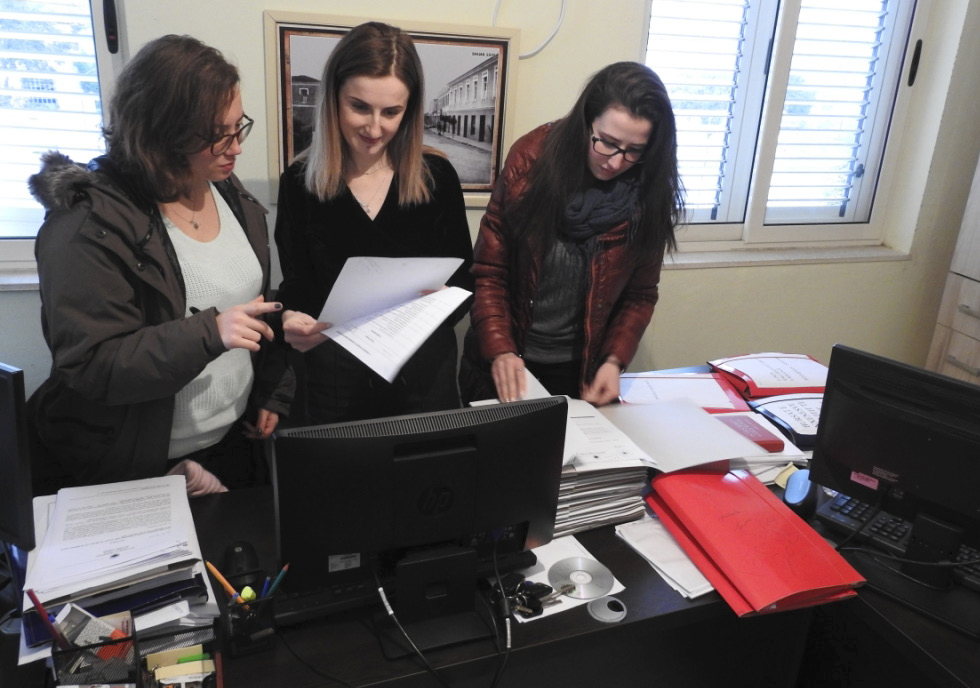 Albanian activists review information available through the digitalization and online publication of decisions of the Shijak Municipal Council. Photo by: https://www.vendime.al/fotolajm/ Lessons from Reformers: Albania publishes local government legislation online Emiriola Velia had a difficult time getting the answers she needed. As the representative of a regional youthRecognizing that investing in youth means investing in a better future, OGP participating governments are creating meaningful opportunities for youth to participate in government processes. Technical ... More council in Kukës in northeastern Albania, Velia relied on understanding the actions taken by her local government to organize and engage effectively in the political process. However, municipal council decisions were not easily accessible. She had to request the information directly from the government, which meant it often took three to four weeks before she received the information she needed. Today, this process looks a lot different. A civil-society driven reform has led to all 61 of Albania’s municipalities publishing municipal council decisions online on a central platform. Background Velia’s experience was not an isolated example. Albania’s system for publishing government legislation was fragmented and inefficient. Though legally required, few local governments provided access to legislation – including municipal council decisions. Many even lacked official websites through which to share information with citizens. In 2016, only 12 of the 61 municipalities published local legislation. This lack of information was a serious problem, especially given new decentralization reforms that endowed local governments with a greater range of responsibilities. The Center for Public Information Issues (INFOCIP), an Albanian NGO that promotes transparency and the rule of law, had been advocating for the online publication of local decisions since 2009. INFOCIP maintained a platform – vendime.al – that included information from an increasing number of municipalities. The organization partnered with the Ministry of State for Local Issues and pushed for further publication of decisions in the framework of the decentralization reforms. Albanian municipalities publish legislation online on a single platform for the first time At the urging of INFOCIP, the Albanian government committed to publishing central and local government legislation online on vendime.al as part of its 2016–2018 OGP action plan. Several donors (including the National Endowment for Democracy, the US embassy, and UNDP’s STAR project) supported municipal efforts to disclose legislation. Many municipalities received financial support from INFOCIP itself. Implementation was swift. According to INFOCIP’s monitoring reports, although only 20 percent of municipalities disclosed local legislation in 2016, this rate increased to 67% by 2017. Most important, by 2018, all 61 Albanian municipalities published local legislation on vendime.al. At this point, the platform hosted more than 20,000 municipal council decisions. Data usage grew alongside the increase in information available. Users viewed 1.5 million pages on the site in 2018, compared to about 240,000 when the site first launched in 2013. Altogether, more than 140,000 unique users (equivalent to 5 percent of Albania’s population) visited the site and recorded almost ten million hits. Lessons learned from the Albanian experience
Access to government legislation is an essential component of good governance. When citizens are better informed, they are empowered to use that information to shape policies, services, and budgets. In Albania, Emiriola Velia can now access all of her local government’s acts online. She no longer has to file information requests to get the information she needs. This saves her time and helps her regional youth council monitor their municipality’s decisions in real time. As more countries like Albania undertake similar reforms to publish legislation, ensuring that results permeate across all levels of government will be critical. This story was made possible through an interview with Gerti Shella (Executive Director, INFOCIP). |
2. Transparency of Rulemaking
Providing public notice of proposed regulatory changes is part of ensuring predictability in the regulatory environment, an aspect that has long been key for firms seeking to make long-range plans and investments. Foreign investors seek insight into the rulemaking plans of the economies in which they invest, both to inform their operations there and to avoid situations where domestic actors receive preferential treatment. Where citizens know the rules that govern their society and have a role in shaping them, they are more likely to comply with those rules. Corruption is lower, and the quality of regulation is higher.
Transparency of rulemaking includes multiple components. This comparative study assesses one of the key aspects of regulatory transparency – whether governments develop forward regulatory plans, that is, a public list of anticipated regulatory changes or proposals intended to be adopted or implemented within a specific time frame. In many countries, public notices include a wide range of information on proposed regulation. In Estonia, for example, the government provides a short summary of the proposed regulation and explains why the regulation is needed, what it is intended to change, and when it is expected to enter into force. In Lithuania, advance public notices are similar to those in Estonia but also include analyses of expected positive and negative impacts of the proposed regulatory changes.
The following maturity model summarizes the main pillars of good practices in the area of regulatory transparency that all OGP members should have in place. The rest of this chapter discusses each of these actions in greater detail and provides examples of reforms that countries are already implementing.
Maturity Model for Future Actions: Transparency of Rulemaking |
|
|
|
|
|
Note: These actionable items are discussed in greater detail further in the chapter.
Several OGP members have made commitments to further transparency in rulemaking processes
Ten countries have made commitments in this area across multiple OGP action plans. Altogether, 21 OGP members (27 percent) have made commitments to publishing forward regulatory plans (see Table 2.1), of which 12 are European countries, including the following:
- Moldova made draft policies publicly available. Moldova’s first commitment aimed to post information on draft policies and legislations, while the second looked to improve and further develop an online participation platform.
- Greece improved an electronic platform for public engagement. As part of its OGP commitment to increasing regulatory transparency, Greece improved an e-platform for publication and annotation of new laws and regulations prior to their submission to the Parliament. The website allows citizens, firms, and civil society organizations to log comments, annotations, proposals, and changes to legal texts.
- Kyrgyz Republic is improving transparency and public engagement by learning from past mistakes. In 2009, the Kyrgyz Republic put forward a legal requirement for public discussion of draft normative and legal acts. However, implementation of the legal provisions has been ineffective for several reasons, such as a lack of forward planning, the absence of a notification system to inform citizens of available drafts, and the lack of a mechanism to respond to comments. Through its OGP action plan, the country committed to remedying these shortcomings by 1) legally amending the rulemaking process to clarify how citizens will be involved and 2) developing a unified portal for draft normative acts, which will enable citizens to provide input and receive feedback.
- Latvia will enable citizens to access legal drafts and participate online in one place. Previously, citizens had to check individual ministry websites to track the development of new draft policies and legal acts. In 2015, the government committed to building a single portal for developing policies that would enable both governmental and nongovernmental actors to track changes in draft documents over time. This long-term project would allow citizens to follow draft legislation through multiple stages of revisions and provide ongoing feedback, up to adoption and enforcement. For an example of a similar reform, see “Lessons from Reformers: Estonia moves from online consultation to co-creation” at the end of this chapter.
Table 2.1 Several OGP Countries Perform Well in Transparent Rulemaking Processes
TRANSPARENCY OF RULEMAKING | |||
Best Performers | Intermediate Performers | Weak Performers | |
Forward regulatory plans are published throughout government and are publicly available (score: 1) | Some ministries/regulatory agencies publish forward regulatory plans (score: 0.5 – 0.75) | Do not publish forward regulatory plans (score: 0) | |
OGP commitment | Armenia, Bulgaria, Canada, Estonia, Finland, Croatia, Ireland, Moldova, the Netherlands, the United States | Albania, Colombia, Georgia, Kyrgyz Republic, North Macedonia, New Zealand | Greece, Guatemala, Israel, Latvia, Mongolia, Paraguay |
No OGP commitment | Azerbaijan, Costa Rica, Czech Republic, Germany, Denmark, France, Indonesia, Italy, Korea (Republic of), Lithuania, Luxembourg, Morocco, Mexico, Malta, Montenegro, Norway, the Philippines, Serbia, Slovak Republic, Spain, Sweden, South Africa, the United Kingdom | Brazil, Côte d’Ivoire, Cabo Verde, Jamaica, Nigeria, Senegal, Ukraine | Afghanistan, Argentina, Australia, Burkina Faso, Bosnia and Herzegovina, Chile, Dominican Republic, Ecuador, Ghana, Honduras, Jordan, Kenya, Liberia, Sri Lanka, Malawi, Pakistan, Panama, Peru, Papua New Guinea, Portugal, Romania, Sierra Leone, El Salvador, Seychelles, Tunisia, Uruguay |
Source: GIRG and OGP databases.
Most OGP countries still do not publish forward regulatory plans
A forward regulatory plan describes regulatory changes that a government institution intends to propose. In general, fewer than half of OGP countries (42 percent) consistently publish forward regulatory plans across government. This may be due to the lack of legal provisions requiring this disclosure. However, countries with an OGP commitment in the area of transparent rulemaking also tend to have a higher GIRG score, which could suggest that countries are leveraging their OGP commitments effectively to make rulemaking processes more accessible and inclusive or that they are playing to existing strengths (see Figure 2.1).
Figure 2.1. Countries with OGP Commitments in Rulemaking Transparency Receive Higher GIRG Scores
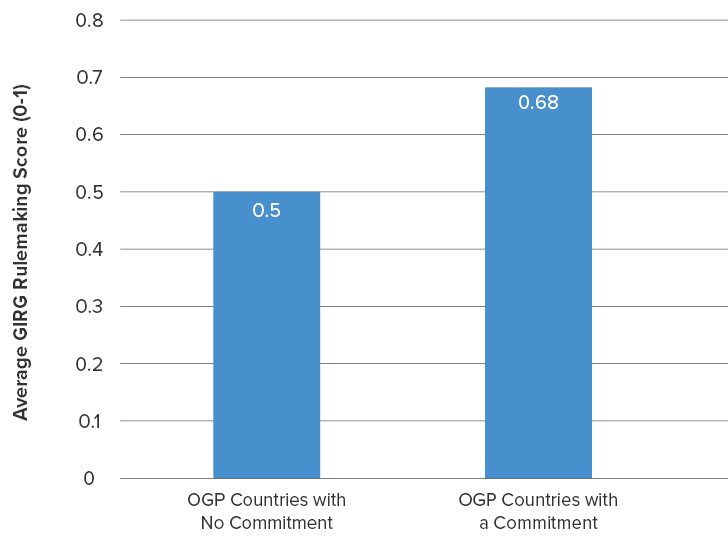
Source: GIRG database, N=78.
OGP countries in Europe have shown the most progress on transparent rulemaking
Across regions, countries in Europe have made the most OGP commitments to improve transparent rulemaking. Out of 31 sampled European countries, about a third have made OGP commitments to publish forward regulatory plans and score well on the GIRG’s regulatory transparency measure (see Figure 2.2). The general data trend indicates that countries that are already showing a good performance in the field of regulatory transparency are also the ones that are actively adopting transparent and inclusive rulemaking through their OGP commitments, such as the Netherlands:
- The Netherlands committed to digitizing government announcements. As of 2009, the Government Gazette, the Bulletin of Acts and Decrees, and the Treaties Series are published in e-format. Starting in 2014, other levels of the Dutch government, including local and provincial, committed to announcing their new regulations and regulatory changes through online publications.
Interesting to note is that some of the European countries that do not have a current commitment in this area already receive a maximum score on the GIRG’s transparency of rulemaking metric. This underscores how several countries do not need to make a specific OGP commitment given an already successful implementation of transparent rulemaking practices. At the same time, the data imply that other countries – such as Portugal, Bosnia and Herzegovina, and Romania – have more room for improvement to meet the broader European standard.
 Visual representation of the European Parliament’s Legislative Train that guides users through the legislative process. The tool can be found here: https://www.europarl.europa.eu/legislative-train/. Photo by: https://vimeo.com/184477380 Lessons from Reformers: The European Parliament’s Legislative Train The European Parliament’s Legislative Train is an interactive app and webpage that allows citizens to monitor progress on the EU Commission’s legislative priorities. The platform looks like a train schedule where each train represents a priority area and each carriage corresponds to individual legislative proposals. Users can use the platform to read about each proposal, find the current status of proposed legislation, and view monthly updates. The platform uses a simple key to indicate if draft laws have been submitted to Parliament for debate, adopted, delayed, or “derailed.” Although the platform was initially created in 2014 under Jean-Claude Juncker to monitor progress on his legislative priorities during his five-year term, the Parliament has since expanded the platform’s scope and continues to use it for its current term, which began in 2019. The Legislative Train is just one of many initiatives by the European Commission aimed at making law-making processes more open and effective. In 2015, the Commission presented its Better Regulation agenda, which looks to ensure that EU laws and regulations are high quality and fit-for-purpose, as well as created, adopted, and evaluated in consultation with citizens. Following the agenda, the Commission held over 400 public consultations and received millions of comments from Europeans on a variety of proposed policies and regulations. The Commission also established the Regulatory Scrutiny Board to standardize and improve impact assessments and other evaluation processes to ensure that existing regulations achieve their policy goals. |
Figure 2.2 Africa and the Americas Have Fewer Commitments in Transparent Rulemaking
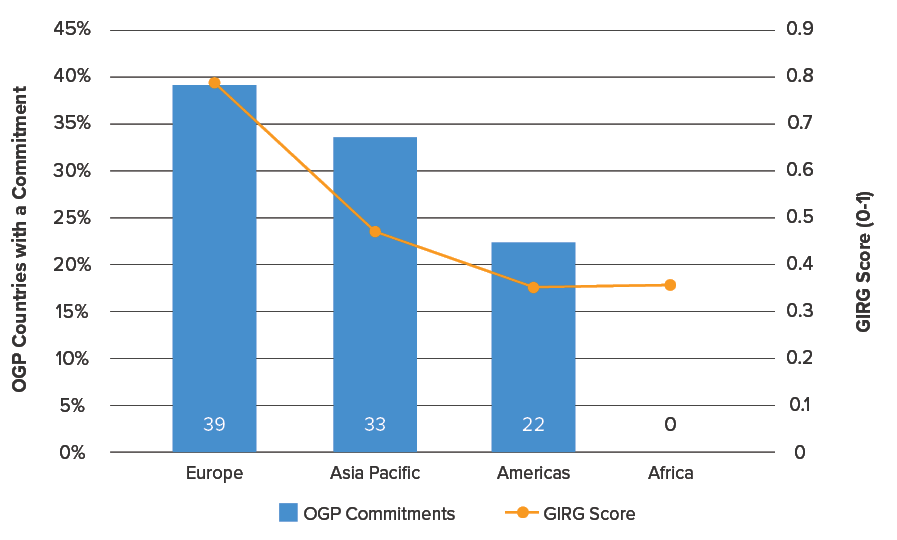
Source: GIRG and OGP databases, N=78.
African countries in OGP lack commitments to improve regulatory transparency
None of the 14 African countries assessed have an OGP commitment in the field of transparent rulemaking. Among these African countries, only Morocco and South Africa received the highest possible score on the transparent rulemaking measure of the GIRG data set. Governments in both countries develop forward regulatory plans that include a public list of anticipated regulatory changes or proposals intended to be implemented within a specified time frame. And in both countries, forward regulatory plans are available to the general public through unified websites. South Africa serves as a particularly good example of participatory rulemaking on the continent:
- South African ministries and regulatory agencies publish annual reports outlining future policy developments. In addition to being available on a unified website, the reports are featured on specific websites of different ministries and regulatory agencies. For example, the reports are available on the websites of the Parliamentary Monitoring Group and the Department of Trade and Industry. To improve the soundness and accountability of regulatory systems on the African continent, countries are encouraged to use the OGP platform to identify viable commitments and frame short- and long-term reform efforts around these commitments.
Few countries in the Americas have made a commitment in this area
In the Americas, four out of 19 countries have actively committed to improving the transparency of rulemaking processes – Colombia, Canada, Guatemala, and the United States. Despite an already strong performance on regulatory transparency indicators, Canada has two commitments in this field, while the United States has three. Examples of countries in the Americas with commitments in this area include:
- Colombia has made a strong commitment to advance participatory rulemaking. On February 14, 2017, the government of Colombia issued a decree stipulating that drafts of all the regulations of the executive branch must be subject to a minimum of a 15-day public consultation period. Also, the new decree mandates every ministry and regulatory agency publish extensive forward regulatory plans for a period of at least 30 days. Now, the government of Colombia has committed to building a central platform for participation. To enhance regulatory transparency further, the government launched a digital app, MiSenado, through which citizens can access legal drafts.
- Guatemala, despite some setbacks, is striving to improve regulatory transparency. Guatemala committed to building public trust in rulemaking and making all legislative changes subject to stakeholder scrutiny before presenting them to Congress. A new feature on the website of Congress has allowed citizens to begin submitting comments on draft laws.
Despite stronger performance, more work is needed in Asia Pacific
Five of the fifteen countries from the Asia Pacific region have made an OGP commitment to systematically publish all notices of proposed rulemaking. Out of these five countries, Armenia receives the highest possible GIRG score on transparent rulemaking, followed by Georgia, the Kyrgyz Republic, and New Zealand. Examples of OGP commitments include:
- Georgia has yet to make forward regulatory plans public. The Parliamentary Secretary collects legislative plans from all of the ministries on a biannual basis and then puts together a comprehensive legislative action plan that is presented to the Parliament. However, forward-looking regulatory plans are not made publicly available. This is similar to the situation in the Kyrgyz Republic, where all ministries are required to develop internal nonpublic legislative agendas for secondary legislation.
- New Zealand publishes regulatory stewardship strategies. Most departments are responsible for developing individual forward regulatory plans. Subsequently, every department contributes to the development of the government’s annual legislative program – for primary laws. In general, these plans and programs are not made public. However, major regulatory departments do publish regulatory stewardship strategies that include regulatory plans within which they have stewardship responsibilities.
- Mongolia committed to making regulatory processes more transparent. Mongolia is yet to deliver on its commitment to making the draft laws, acts, amendments, and administrative rules open to the public. In particular, the government aims to make regulatory information publicly available through “Public Service Online Machines,” Citizens Chambers, and public libraries at each provincial level.
The performance gap is evident between high- to upper-middle-income and low-income countries
High- and upper-middle-income countries generally perform strongly, but not uniformly. Many of these countries’ OGP commitments are driven by the European Union’s and the Organisation for Economic Cooperation and Development’s (OECD) mandates. Countries from these two income cohorts also tend to score better on the GIRG measures (see Figure 2.3). Arguably, rich economies have more resources (human and financial), administrative capacity, and requisite legal expertise to undertake and effectively implement reforms. They also benefit from more advanced use of information technology. In the case of the OECD, all members now employ some form of regulatory impact analysis, which may play a role. However, well-to-do countries still have considerable room for improvement. Specifically, seven high- and upper-middle-income countries score poorly on the GIRG measure and have not made a commitment through OGP to address the gap.
Low-income countries have numerous opportunities to improve. Low-income countries do not need to be technologically savvy to practice inclusive and transparent rulemaking. Discussions on new regulations can be subject to public hearings as well as stakeholder scrutiny through in-person meetings. Draft laws and regulations could be publicly disclosed and invite public comments through official gazettes and other physical publications. When there is a political will to enhance transparency and inclusiveness, there are ample opportunities to do so. Also making use of new cloud-based platforms and technologies significantly reduces IT costs in terms of operational maintenance and security in comparison to the use of previous (hardware-based server) technologies and paper-based filing systems.
Figure 2.3 High-Income Economies Have Achieved Better Levels of Regulatory Transparency
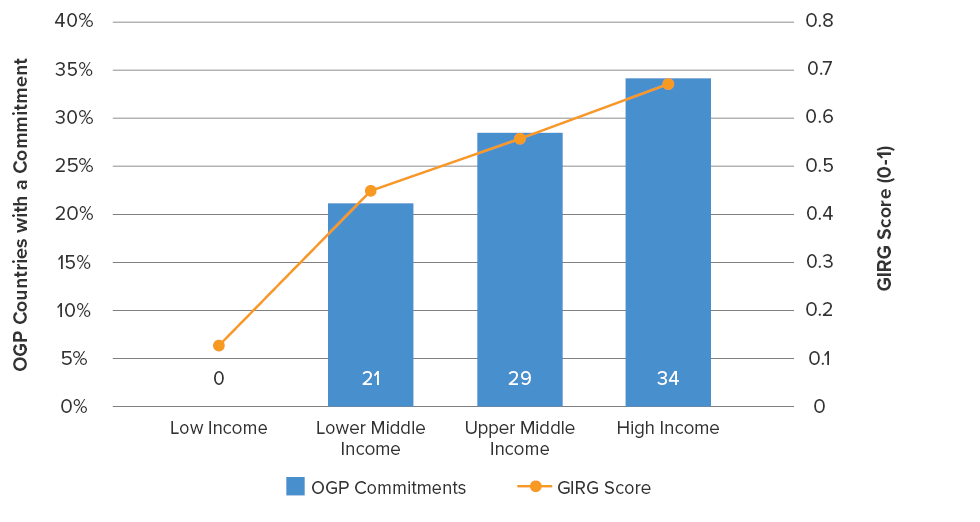
Source: GIRG and OGP databases, N=78.
Conclusion
Although about a third of OGP countries have made OGP commitments in this area, further regulatory action is needed to improve transparency of rulemaking processes worldwide. And more countries should commit to creating inclusive legislative frameworks. This commitment is particularly urgent in Africa and the Americas, where the levels of transparency are particularly low compared to Asia Pacific and Europe. Advancing regulatory transparency and promoting inclusiveness of law-making allows regulators to build relationships of trust with their constituencies and obtain the necessary buy-in on regulatory changes. Furthermore, early feedback from stakeholders, civil society, and business communities makes new regulations more impactful, relevant, and effective.
 Estonia held the People’s Assembly on the Future of Aging in May 2017. Photo by: Andres Raudjalg for rahvaalgatus.ee Lessons from Reformers: Estonia shifts from online consultation to co-creation In the northeastern region of Ida-Virumaa in Estonia stands a rare old-growth forest that has been largely undisturbed throughout human history. A popular getaway for urbanites, it is perhaps more importantly the permanent home of a number of rare and endangered animal species. In 2016, the government decided to begin burning wood at a new power plant, sparking public outrage. Citizens petitioned the government online to stop deforestation in the region and involve them in conservation efforts. Thanks to Estonia’s long-term investments in online participation, it worked. The government met with citizens to discuss their proposals and changed the rules to better protect Estonia’s forests – and the endangered species that call them home. The country has embraced the digital transformationGovernments are working to increase access to and quality of government services, improve transparency, and create opportunities for participation by using information and communications technologies.... More wholeheartedly in a way that many countries, rich and poor alike, seek to emulate. Often considered one of the most successful transition countries in the world, Estonia is working to enhance its quality of life and economic base without sacrificing environmental quality. Its efforts to enhance democracy in regulatory decision-making are essential to this objective. Advancing open regulatory processes through OGP Since joining OGP in 2011, Estonia has made commitments to strengthen the Information System of Draft Acts (EIS), a platform that enables citizens to comment on legislative drafts. Reformers made the website more user-friendly, expanded government training, and created a system to notify citizens about upcoming draft laws. However, both government and civil society agreed that more needed to be done. Civil servants wanted a smoother path for co-creating legislation across ministries, and civil society advocated for participating in the process sooner. With this in mind, Estonian reformers committed to developing a new information system for involving citizens in policy development. Building an online environment for co-creation The system will open up a user-friendly space for government officials and citizens to co-create policies. Civil servants will be able to co-work on the same text across ministries and with experts outside of government through a collaborative environment similar to Google Docs or Microsoft Office Online. This will cut unnecessary bureaucracy and make the policy-making process as transparent as possible. There will also be spaces for online discussion and working groups to more easily involve several groups (e.g., ministries, experts, civil society organizations) throughout the policy-making process. Moving beyond consultation to meaningful co-creation This commitment institutionalized citizen engagement practices that move beyond consultation to co-creation. There is a place for citizens in every step of the policy development process, either as an active participant in a working group or as an observer of the process who can still track progress and provide comments. Citizens criticized the older EIS system for making it too hard to follow a policy from draft to completion. Previously, drafts usually only reached the public three weeks before approval. The new system will automatically notify citizens when the policy-making process begins and allow them to track the progress of policy development, even if the draft is not yet public. Creating an effective means for citizen engagement Above all, the platform is meant to effectively channel citizen input into the regulatory policy-making process. In a country like Estonia, where citizens regularly comment and publish opinions on proposed government policies (as exemplified by a recent forestry plan), a systematized co-creation processCollaboration between government, civil society and other stakeholders (e.g., citizens, academics, private sector) is at the heart of the OGP process. Participating governments must ensure that a dive... can engage more people in the process earlier and in a more meaningful way. A centralized approach to open regulatory policy-making also makes it easier for citizens to engage. The OGP’s Independent Reporting Mechanism (IRM) found that there was low usage of the EIS platform, in part because there were already several other channels for communication. As noted by the former manager of the Rahvaalgatus.ee platform (that enables citizens to propose initiatives directly to Parliament), Teele Pehk, “Estonia is beyond the stage of simply having technology. Now it’s about making it user-friendly. That’s why we have the one-stop-shop attitude.” Lessons learned: How to implement open policy-making
Without the combined power of civil society’s passion and expertise and the government’s willingness to listen and take action, projects like the one to protect endangered species in a beloved Estonian forest would not be possible. Estonia’s open regulatory policy-making journey has been a long one – and it is not over yet. Over the next few years, civil society is advocating for the government to invest in public campaigns and civic educationAccountability within the public education system is key to improving outcomes and attainment, and accountability is nearly impossible without transparent policies and opportunities for participation ... to expand participation beyond the typical users, and the government hopes to integrate the Parliament’s system into the new platform. Regardless of the particular approach, open policy-making initiatives like these will be essential for Estonia – and other societies – to effectively address the key issues they face. This story was made possible by interviews with Liia Hänni (Senior Expert, e-Governance Academy), Ott Karulin (Adviser, Strategy Unit, Government Office), Teele Pehk (former CEO, Estonian Cooperation Assembly), Maarja-Leena Saar (Project Manager, Rahvaalgatus.ee), and Merilin Truuväärt (Innovation Team Project Manager, Estonia State Chancellery). Many thanks for their excellent insights and contributions. Many thanks also to the Independent Reporting Mechanism for its detailed reporting on Estonia’s participation in OGP. |
3. Public Consultation
Requesting comments and reporting back on the results of consultations when crafting new laws and regulations is one of the main pillars of transparent and participatory rulemaking. Feedback from stakeholders helps policy-makers identify conceptual problems and reshape the scope of proposed regulations to yield the intended outcomes. Through consultations, governments can also hear from other groups that – while not necessarily the target of the proposed regulation – may face (or help identify) substantial unintended harm if a regulatory draft remains unchanged. To solicit comments, governments can conduct public outreach through several avenues: offering interactive websites, hosting open meetings, or reaching out directly to known stakeholders.
Beyond the intrinsic value of involving citizens in rulemaking, research shows that countries that institutionalize public participation in rulemaking tend to have better economic growth, stronger legal institutions, a more vibrant private sector, and less corruption. Specifically, in the area of private sector development, countries with well-established regulatory processes benefit from business regulations that are more effective in achieving stated goals.[17] If stakeholders can openly voice their concerns about upcoming regulatory changes and be assured that their input is carefully considered, they are more likely to abide by and benefit from new regulations. The maturity model for potential actions – through OGP action plans or otherwise – illustrates some of the key measures in the area of public consultation that OGP countries should put in place.
Maturity Model for Future Actions: Public Consultations |
|
|
|
|
|
Note: These actionable items are discussed in greater detail further in the chapter.
Most OGP countries have legally obligatory notice and comment systems institutionalized, but some members still lag behind
Encouragingly, there is an established practice of seeking stakeholder input into rulemaking processes in most OGP countries (see Table 3.1). Only eleven countries – Afghanistan, Burkina Faso, Cabo Verde, Ecuador, Guatemala, Honduras, Liberia, Sri Lanka, El Salvador, and Seychelles – receive a score of zero in this area of study. Afghanistan, El Salvador, and Guatemala, however, have leveraged the OGP platform to make commitments related to engaging their constituencies in the design of new laws and large-scale projects:
- Afghanistan aims to develop a functional consultation system. The Ministry of Public Works in Afghanistan aims to develop a monitoring and participatory mechanism to engage local communities in the planning and implementation stages of infrastructure developments. The ministry envisions local community representatives as focal points in interactions between regulators and citizens. Specifically, grassroots participation in transport infrastructure projects is viewed to be of paramount importance and key to successful completion of road network schemes.
- El Salvador plans to introduce participatory rulemaking for environmental issues. The Ministry of the Environment and Natural Resources in El Salvador made a commitment in 2018 to develop a participatory law-making scheme. The country’s Environmental Law already stipulates the right of citizens to partake in consultations on policies, plans, programs, concessions, and environmental impact studies. The current challenge is to introduce a cross-cutting framework to enable citizen participation in the development of nationwide environmental policies, strategies, and plans of action. Thus far, there is only a rudimentary framework in place for engaging constituencies in environmental impact assessments, most – if not all – of which address project-level decisions rather than policies.
Table 3.1 OGP Countries’ Performance in the Areas of Consultative Rulemaking
PARTICIPATORY RULEMAKING | |||
Best Performers | Intermediate Performers | Weak Performers | |
Consultation process exists and is transparent (score: 2) | Consultation process exists but with a varying degree of transparency (score: 0.25–1.75) | Consultation process does not exist (score: 0) | |
OGP commitment | Armenia, Bulgaria, Bosnia and Herzegovina, Canada, Estonia, Greece, Croatia, Morocco, Netherlands, Norway, United Kingdom, United States | Albania, Argentina, Chile, Colombia, Dominican Republic, France, Indonesia, Ireland, Israel, Italy, Kyrgyz Republic, Lithuania, Latvia, Moldova, North Macedonia, Montenegro, New Zealand, Paraguay, Romania, Serbia, Slovak Republic, Tunisia, Ukraine | Afghanistan, El Salvador, Guatemala |
No OGP commitment | Costa Rica, Denmark, Korea (Republic of), Luxembourg, Mexico, Malta | Australia, Azerbaijan, Brazil, Côte d’Ivoire, Czech Republic, Finland, Germany, Georgia, Ghana, Jamaica, Jordan, Kenya, Mongolia, Malawi, Nigeria, Pakistan, Panama, Papua New Guinea, Peru, Philippines, Portugal, Senegal, Sierra Leone, Spain, South Africa, Sweden, Uruguay | Burkina Faso, Cabo Verde, Ecuador, Honduras, Liberia, Sri Lanka, Seychelles |
Many countries have made OGP commitments in participatory rulemaking, but more is needed
Commitments that aim to improve public engagement in the rulemaking process are common in OGP (see “An Overview of Regulatory Governance Across OGP Action Plans” for more details). Altogether, 38 OGP countries (or just under half of all countries) have made a commitment in this area. Croatia, Israel, Moldova, Paraguay, and the United States have three commitments each, while the Slovak Republic has four, and Estonia and North Macedonia have six. Several commitments have already contributed to important results:
- Croatia enforced a legal mandate for participatory rulemaking. Croatia has made three OGP commitments in this area between 2012 and 2018. At first, Croatia’s Government introduced amendments to the Rules of Procedure to require proposals of draft laws to undergo a due consultative process (aligned with the Code of Practice on Consultation). Upon completion of consultations, there is now a legal obligation to prepare and submit a report on the outcomes of consultations together with the relevant draft law. As part of Croatia’s 2014–2016 OGP action plan, the government launched a standardized web platform for carrying out consultations with stakeholders and the general public. A more recent 2018 commitment focused on providing training to state officials, consultation coordinators, and civil servants in state administration bodies as well as in local and regional self-government units to ensure accurate compliance with the new processes.
- The Slovak Republic has also made inclusive rulemaking a mandatory practice. In 2012, the Slovak Republic committed to creating rules outlining public involvement in the development of selected policies. Soliciting comments on proposed regulations is now mandated by law per the Legislative Rules of the Slovak government. Early stage consultations with business communities usually take about four weeks, while consultations through interministerial procedure take no longer than two weeks.
Nearly half of OGP countries should consider taking action to institutionalize and enhance participatory rulemaking. According to the GIRG project data, 36 OGP countries fall below the top score for participatory rulemaking and have not made an OGP commitment to address the gap. These include both developed and developing countries. Developed countries should improve the scope of consultations, ensuring they take place at both national and regional levels. Germany, Portugal, and Sweden, for instance, do not have a unified regulatory website for receiving stakeholder input on rulemaking processes. In Portugal and Sweden, consultations are mostly done for primary laws; this practice is not widespread for secondary regulations. Regulators in Australia and Finland have no legal obligation to solicit comments on draft laws. Consultations are carried out at the discretion of relevant policy-making bodies.
Most OGP countries use specialized websites to receive feedback
The most common practice for soliciting feedback on proposed regulations across OGP countries is using specialized websites, as reported in 47 percent of the sampled countries. In lower-income countries, such as Ghana, Nigeria, Mongolia, and Pakistan, when regulators seek stakeholder input on proposed regulations, feedback is mostly solicited through in-person interactions, and there are no standard protocols that regulatory bodies have to follow. In 20 OGP countries, mostly lower-income ones, comments on draft regulations are received through public meetings. Some of these meetings are by invitation only, while others are open to the public, such as in Panama:[18]
- Panama organizes committees charged with carrying out public hearings. In Panama, opinions and observations of stakeholders and interested citizens are heard in public meetings organized by working committees. Civil servants document detailed meeting minutes, and interested individuals are invited to submit written proposals and suggestions. However, there is no obligation to report back on the results of consultations.
Providing a reasoned response after consultations is essential to participatory rulemaking
The practice of reporting back on received comments demonstrates to constituencies that their input was carefully considered, and their voices have been heard. It allows governments to build a system based on trust and accountability. If comments are not incorporated, regulators should provide a proper explanation as to why certain decisions were made. In almost 60 percent of OGP countries (where feedback is solicited on proposed regulations), governments report back on the results of a consultation. Most governments prepare one consolidated response to all the comments received, while regulators in one in five OGP countries provide customized responses for different audiences. The following are examples of these kinds of policies:
- Albania requires policy-makers to provide explanations on why certain comments were not considered. Consolidated as well as customized responses are presented to the Council of Ministers with explanatory notes describing the entire consultation that took place with stakeholders, public institutions, and the business community. Rulemaking bodies have to prepare explanatory notes, clearly specifying which points the stakeholders agreed and disagreed with, whether their comments were reflected or not, and for which reasons.
- Colombia and Romania set in place mechanisms to ensure that consultations are properly implemented. Colombia’s Decree 270 stipulates that regulatory agencies must publish a table with all the comments received from the public consultation. A response to the comments must also be provided in a written form. In Romania, whenever a public debate on a regulation takes place, there is a legal obligation to report back on the completed consultations.
- Lithuania has a legal mandate to carefully consider all received comments. During a consultation period, it is a legal obligation to take all comments into consideration. Then, an acceptance or nonacceptance decision is made available to the public through a so-called “alignment note.” According to the Rules on Considering Requests of Persons, responses to public comments should be provided within 20 working days.
OGP countries use different channels to report on the results of public consultations
Whether consolidated or customized, reports on the results of public consultations are communicated through a variety of channels (see Figure 3.1). In some countries, the results are posted on a dedicated website used for all regulatory consultations, which is considered the best practice, while in others, they are published on the websites of relevant agencies or ministries. In a number of OGP countries, including Bulgaria, Georgia, Greece, Latvia, and Panama, the outcomes are communicated directly to stakeholders. In these countries, stakeholders are informed about the results of consultations through emails, letters, and/or in-person meetings. Latvia is a particularly strong example:
- In Latvia, ministries must consolidate all received feedback and provide summary statements on what is agreed upon and why. If there are any nonconsensus issues, the responsible ministry must call a meeting to find a compromise. When a consensus cannot be reached, problematic questions are debated at the Cabinet of Ministers. Commonly, civil society and business community organizations are invited to participate in such debates. Furthermore, experts are invited to provide their assessments and offer feedback. Prior to open meetings, comprehensive documentation with diverse feedback is distributed to all the parties partaking in the process. The final version of the draft legislation is submitted to the Cabinet of Ministers.
Figure 3.1 Unified Websites Are the Most Common Way for OGP Countries to Report Consultation Results
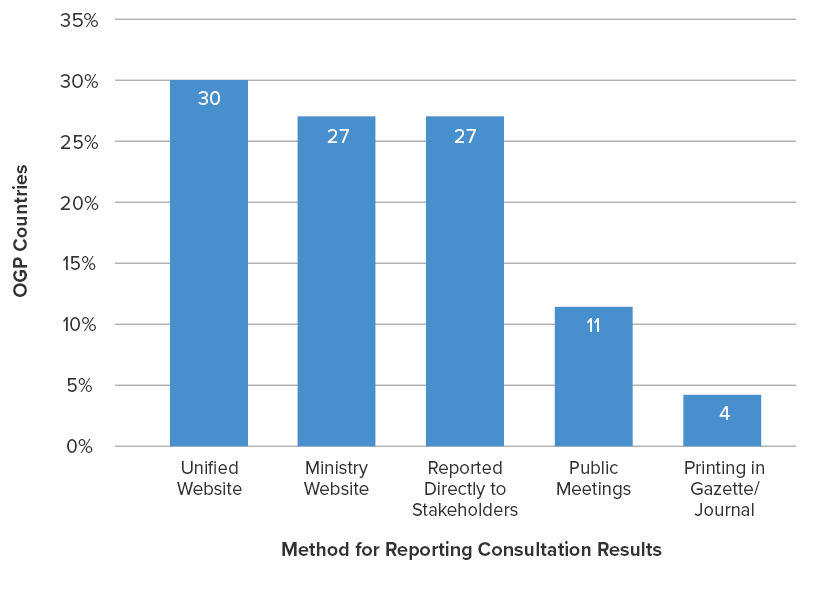
Source: GIRG database.
Note: The analysis includes only countries that provide responses to received comments. The “other” category is excluded from the analysis.
The time it takes to report back on consultations varies substantially
It can take rulemakers as short as ten days or as long as over a year to report back on the results of consultations. Regulators in France, Ireland, and Jamaica report back on consultations within about three months. Conversely, in Montenegro and Serbia, most reporting is completed within two weeks. In Spain, a rulemaking body is required to publish a consolidated consultation report within 15 days after the end of a consultation. In practice, however, it generally takes the rulemaking body several weeks to publish the report.
OGP countries that solicit feedback on proposed regulations and report back on the received comments tend to score better on the GIRG’s consultation score (see Figure 3.2). Many countries that obtain higher GIRG scores in this area share common characteristics. These countries have made at least one OGP commitment to carry out consultations on new or amended regulations, engage stakeholders in early stages of planning regulatory changes, mostly use electronic means of communication, and show stronger levels of transparency and accountability.
Figure 3.2 Countries with OGP Commitments on Inclusive Consultative Processes Receive Higher GIRG Scores
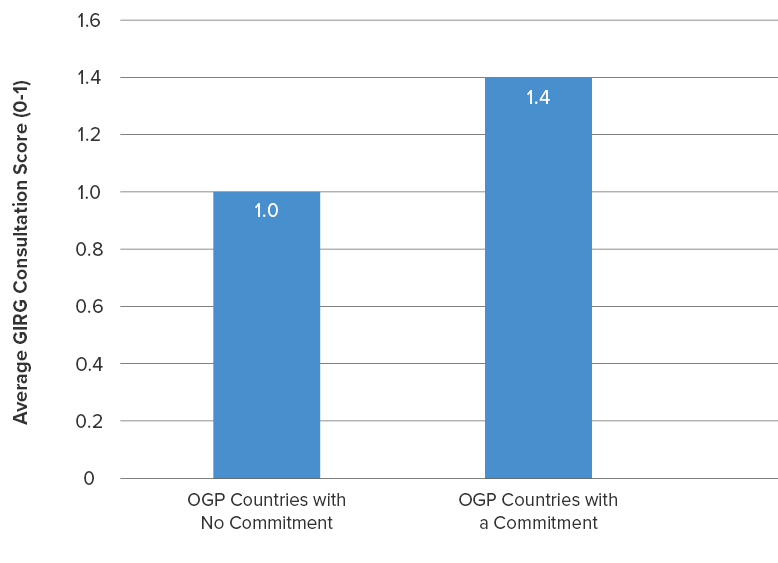
Source: GIRG and OGP databases, N=78.
European countries show strong inclusive rulemaking but room for improvement remains
Figure 3.3 shows performance by region according to both GIRG and OGP. Similar to the patterns observed in other areas of study, European countries lead OGP members in the rate of commitments made to improve participatory rulemaking. They also obtain the highest scores on the GIRG measures of notice and comment. Countries in the Americas have the second-highest rate of OGP commitments; almost 50 percent of countries in the Americas have made at least one commitment in participatory rulemaking. Yet more remains to be done. Soliciting comments on proposed regulations is required by law in less than half of OGP countries in the region.
A suggested commitment, in line with the maturity model presented at the beginning of this chapter, is to make the process of notice and comment mandated by legislation. A subsequent commitment should be to ensure that public officials comply with legal requirements in practice. Other recommendations include setting up centralized sites for regulatory consultations, organizing open and targeted invitational meetings (as necessary), and mandating publication of feedback and explanations. Estonia is an example of a country implementing these latter steps. For more details, see “Lessons from Reformers: Estonia” following the end of Chapter 2, “Transparency in Rulemaking.”
Figure 3.3 Africa and Asia Pacific Lag behind in OGP Commitments to Improve Consultative Processes in Rulemaking
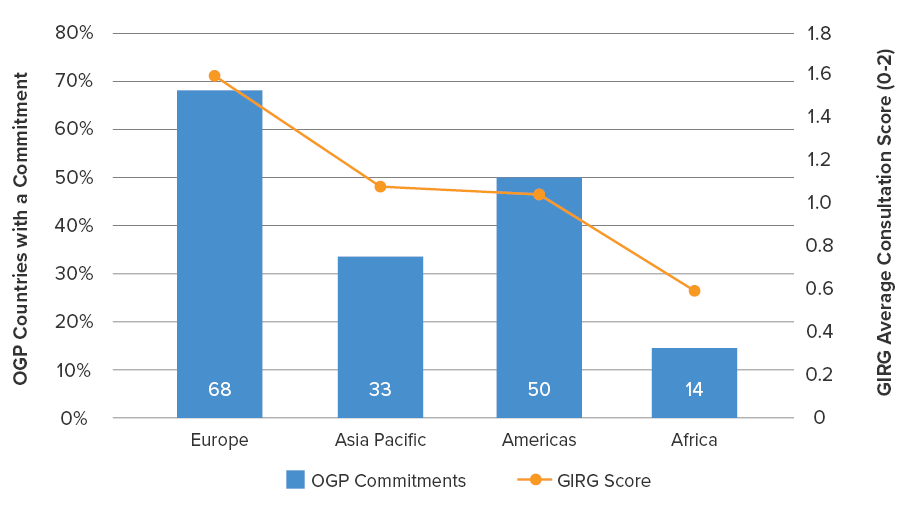
Source: GIRG and OGP databases, N=78.
African OGP countries have few OGP commitments and significant room for improvement
Both the policy and practice of rulemaking could be improved in the African countries surveyed. Among African OGP members, only Kenya, Sierra Leone, and South Africa have a legal obligation to carry out consultations for new regulations. However, consultations do not always take place in practice. So far, Kenya, Morocco, Tunisia, and South Africa have achieved strong results in engaging their constituencies in regulatory processes. Of these countries, Morocco has also made a recent OGP commitment in this area:
- Morocco has committed to improve consultations at both national and regional levels. The Moroccan government is working on raising civil society organizations’ and citizens’ awareness of the ways in which they can participate in day-to-day public management. Moroccan regulators aim to set up regional consultative bodies tasked with facilitating effective dialogues between policy-makers and business communities as well as civil society organizations. Simple guidelines will be developed to specify the roles and responsibilities of local consultative agencies. Successful implementation of this commitment will engage stakeholders in the drafting, execution, and assessment of public policies, thus improving their quality and relevanceAccording to the OGP Articles of Governance, OGP commitments should include a clear open government lens. Specifically, they should advance at least one of the OGP values: transparency, citizen partic....
Divergence at different levels of development
Across income groups, low-income countries have made fewer relevant OGP commitments and receive comparably low GIRG scores (see Figure 3.4). Low-income countries are also less advanced in the use of modern technology and electronic means of communication. Not surprisingly, online platforms tend to be mostly used in the high-income group: in 63 percent of high-income countries where regulators request comments on proposed regulations, they use the Internet to do so. Governments in these countries most often use a single, dedicated website for this purpose. In Canada, for example, departments and agencies use a specific website to receive comments as well as provide summaries of comments received along with responses to those comments. Unified websites are rarely used in low- or lower-middle-income countries to disseminate the results of public consultations. However, countries do not have to be technologically advanced to practice participatory rulemaking (see “Good to Know: How to improve participatory rulemaking offline” for more details).
Figure 3.4 Low-Income Countries Make Fewer OGP Commitments around Consultative Rulemaking
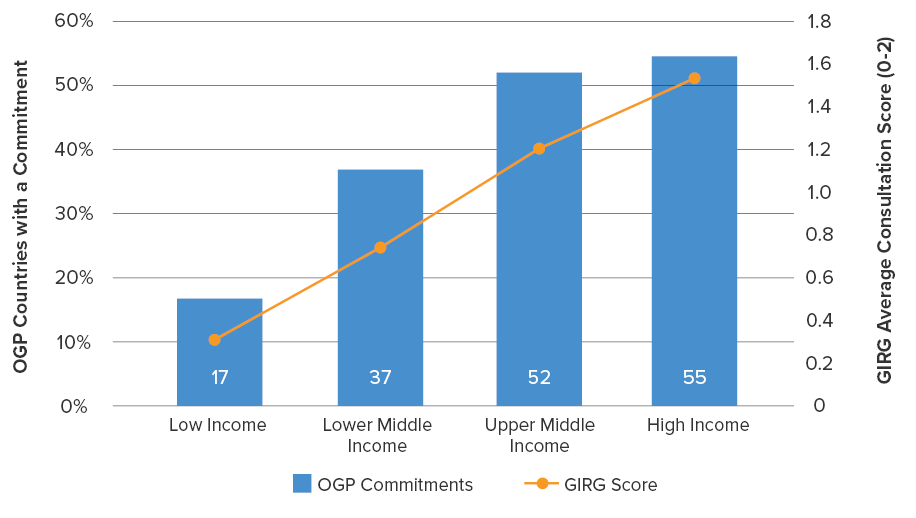
Source: GIRG and OGP databases, N=78.
Good to Know: How to improve participatory rulemaking offline Comments in draft laws and regulations can be effectively solicited in poor and rich countries alike. A sophisticated electronic platform is not required to invite stakeholders for an in-person roundtable discussion. Comments can be received through workshops and targeted outreach. Proposed changes to laws can be made public through official regulatory journals and gazettes. Regulators in Malawi, Senegal, and Sierra Leone, for example, seek input on regulatory changes from business associations and civil society. In these countries, comments can be received via paper mail and email and over the phone. In Sierra Leone, the media are commonly used to disseminate information on upcoming regulatory changes. Regulators receive live text messages and phone calls during television and radio programs. When donor funding is available, members of Parliament carry out in-person consultations and report back on the results to both donors and stakeholders. |
Conclusion
Although many OGP countries have made commitments related to participatory rulemaking, performance varies across regions and income groups. A stronger commitment to institutionalizing participatory rulemaking procedures is especially needed from lower-income countries. Key next steps for many countries include mandating citizen engagement in rulemaking, providing reasoned responses as part of consultations, designing web platforms to collect comments, training regulatory officials on these systems, and ensuring that the public is properly informed of opportunities to engage. For additional standards and recommendations, see the following box with guidance from the OECD.
Guidance and Standards: OECD 2012 Recommendation on Regulatory Policy and Governance (Principle 2) Adhere to principles of open government, including transparency and participation in the regulatory process to ensure that regulation serves the public interest and is informed by the legitimate needs of those interested in and affected by regulation. This includes providing meaningful opportunities (including online) for the public to contribute to the process of preparing draft regulatory proposals and to the quality of the supporting analysis. Governments should ensure that regulations are comprehensible and clear and that parties can easily understand their rights and obligations.
From the OECD 2012 Recommendation on Regulatory Policy and Governance (Principle 2) and accompanying Best Practice Principles on Stakeholder Engagement in Regulatory Policy, available here. |
 Global parliamentary leaders and the co-chairsThe leadership of the Steering Committee is made up of four co-chairs who provide strategic guidance and support to advance OGP’s overarching priorities. Co-Chairs serve two-year terms beginning on ... of the OGP Steering Committee share information about experiences and challenges in implementing commitments to improve parliamentary openness at a session during the OGP Summit in Mexico City. Photo by: OGP Lessons from Reformers: Mexico builds a regulatory ecosystem Background The government began opening up its law and rulemaking processes after a series of debt crises in the 1980s and 1990s.[19] In its recovery, Mexico – like other affected countries – moved to privatize industry and opened its economy to international trade.[20] These reforms in turn demanded changes to the institutional and regulatory framework that governed the country’s economic activity. Initially, the government maintained a “top-down” approach to regulation creation and reform, but by the early 2000s, government officials realized that transparency and accountability would be key to making the new regulatory regime more effective.[21] Mexico introduces a transparent and participatory regulatory framework Moving toward a more open framework, Congress passed legislation in 2000 that established the Federal Commission for Regulatory Improvement (COFEMER), a federal oversight body tasked with ensuring effective regulations and a transparent rulemaking process. The law required regulatory impact assessments (RIA) and public consultation on all draft federal regulations through a new online portal. The online portal lists all draft regulatory proposals with their RIA. Once the documents are published, citizens have at least 30 days to submit comments through the portal, by email, or by letter. Once the comment period closes, the agency sponsoring the regulation is required to provide responses to all comments received. Documentation of this process is also published online. Recent legislation opens up subnational regulations In 2018, COFEMER’s mandate expanded with the adoption of the General Law of Better Regulation, making it one of the most powerful regulatory-coordinating authorities in the world.[22] Under the new law, COFEMER – now the National Commission for Regulatory Improvement (CONAMER) – has authority over regulatory measures at all levels of government, including state and municipal regulations. As a result, the regulatory portal now includes state and municipal draft regulations and subjects these drafts to the same pre-existing public consultation requirements. The new mandate, though impressive, presents challenges both logistical – CONAMER must align over 150,000 regulations throughout Mexico – and political, as state-level entities are controlled by different political parties. Yet, it also introduces significant opportunities to serve citizens across the country by creating a unified source of information. Under this new framework, Mexico today has one of the most transparent regulatory systems in the world. Leveraging the regulatory system during the COVID-19 pandemic The impact of Mexico’s regulatory framework is perhaps most clear in CONAMER’s response during the COVID-19 pandemic. CONAMER publishes all pandemic-related regulatory changes at all levels of government on its website and updates the information daily.[23] Users can easily filter regulations by jurisdiction, which allows citizens, small businesses, and civil society to review any proposed regulations that might affect their state or municipality during the emergency. In addition, CONAMER has monitored which states have responded to the pandemic through regulations that address key areas such as stimulus packages, support to vulnerable communities, and curbing contagion. This unified source of information helps citizens better understand, and potentially contest, how their government is responding to the current health crisis. |
4. Challenging Regulations
An important component of regulatory governance is legally mandating open regulatory processes and enabling citizens to challenge regulations if those processes are not followed. Creating channels for complaints and redress are key to maintaining trust and ensuring that regulations achieve their intended benefits for society. They are also essential mechanisms to hold government officials accountable for following the practices recommended in previous chapters, such as publishing draft regulations and consulting citizens.
Enabling citizens to challenge regulations goes beyond merely upholding standards of transparency and participation. It also ensures fairness and nondiscrimination. For example, citizens should be able to challenge regulations if regulatory bodies overstep their authority or take disproportionate action. This is important for investors as well, as ensuring that businesses can reverse potentially discriminatory regulations is a driver of investor confidence.
As this chapter makes clear, many OGP members have room for improvement as it relates to enabling challenges of regulations. The following maturity model presents some of the concrete steps that OGP members can take to address the gaps in their regulatory frameworks. The rest of the chapter presents the state of play among OGP countries, highlights existing reforms, and introduces relevant global standards.
Maturity Model for Future Actions: Challenging Regulations |
|
|
|
|
Note: These actionable items are discussed in greater detail further in the chapter.
Good to Know: Challenging the substance of a regulation This chapter deals mainly with challenging the validity of regulations on procedural grounds. However, it is also important to enable citizens to challenge regulatory decisions based on substantive grounds. For example, public interest organizations may want to ensure that a regulation takes into account particular socioeconomic, cultural, or environmental concerns. These challenges may take place in regular courts or in specialized tribunals, depending on the specific sector or legal area. For example, a growing number of countries have “green tribunals” that review the substance of environmental rules and regulations. Given the variety of such tribunals, discussion of the individual merits of each is beyond the scope of this paper. Nonetheless, there are a number of principles that OGP members can follow to ensure that members of the public can challenge regulations based on substance:
|
Affected parties in many OGP countries cannot appeal adopted regulations
One of the indicators of the GIRG project asks government officials and the private sector whether affected parties in their country can request reconsideration of or appeal adopted regulations to the relevant administrative agency. According to this metric, the majority of OGP countries (47) have mechanisms for affected parties to initiate reviews of regulations. However, as Figure 4.1 shows, affected parties in nearly two in five (or 29) OGP countries cannot challenge regulations. This is most likely because there is no recognized legal basis in these countries on which to challenge a regulation (e.g., it is unconstitutional, discriminatory, or not based on corresponding law or the agency that adopted it acted outside of the scope of its authority). As a result, establishing clear legal requirements for the rulemaking process is the first area for improvement in many OGP countries.
Figure 4.1. Many OGP Members Lack Provisions for Challenging Regulations
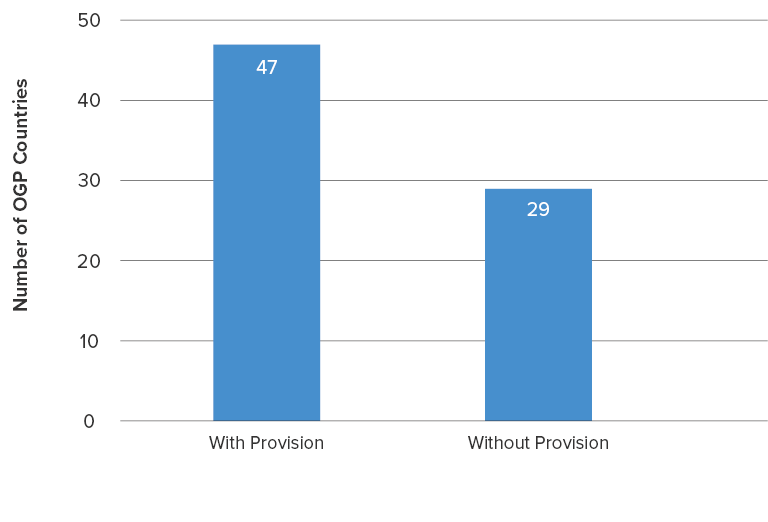
Source: GIRG database, N=76
OECD countries are more likely to enable citizens to challenge regulations
The World Economic Forum (WEF) collects data that complement the GIRG project data presented earlier. As part of the Global Competitiveness Report, the WEF surveys business executives across the world on various issues, one of which relates to challenging regulations. Specifically, business leaders indicate how easy it is for private businesses to challenge government regulations through the legal system. Unlike the GIRG data, these responses are on a spectrum, which allows us to identify the strongest performers. Interestingly, differences in performance across regions are minor. Instead, OECD countries stand out as the countries that make it easiest for citizens to challenge regulations. Indeed, 13 of the top 15 countries on the WEF metric are OECD members.
Citizens can challenge regulations in court in about half of OGP countries
The data collected by the GIRG project also cover the type of recourse available to citizens for challenging adopted regulations. Figure 4.2 shows that judicial review is the most common recourse, although review by regulatory bodies is also common. In about a third of all OGP countries, affected parties have multiple avenues for recourse. However, it is unclear from this data how citizens can initiate these processes or under which circumstances.[24] See “Lessons from Reformers: The United Kingdom brings in citizens to review regulations” for an example of the role that citizens can play in providing regulatory oversight.
Figure 4.2. Courts Are a Common Recourse for Regulatory Challenges
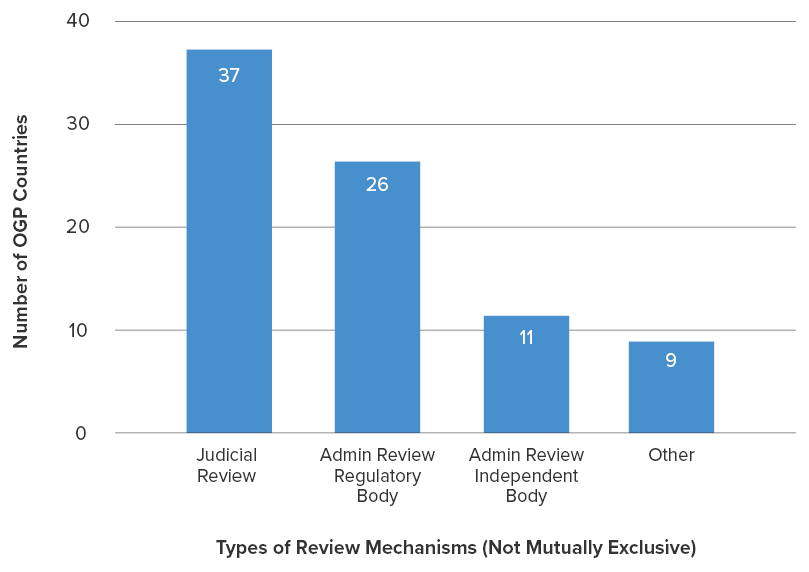
Source: GIRG database, N=46
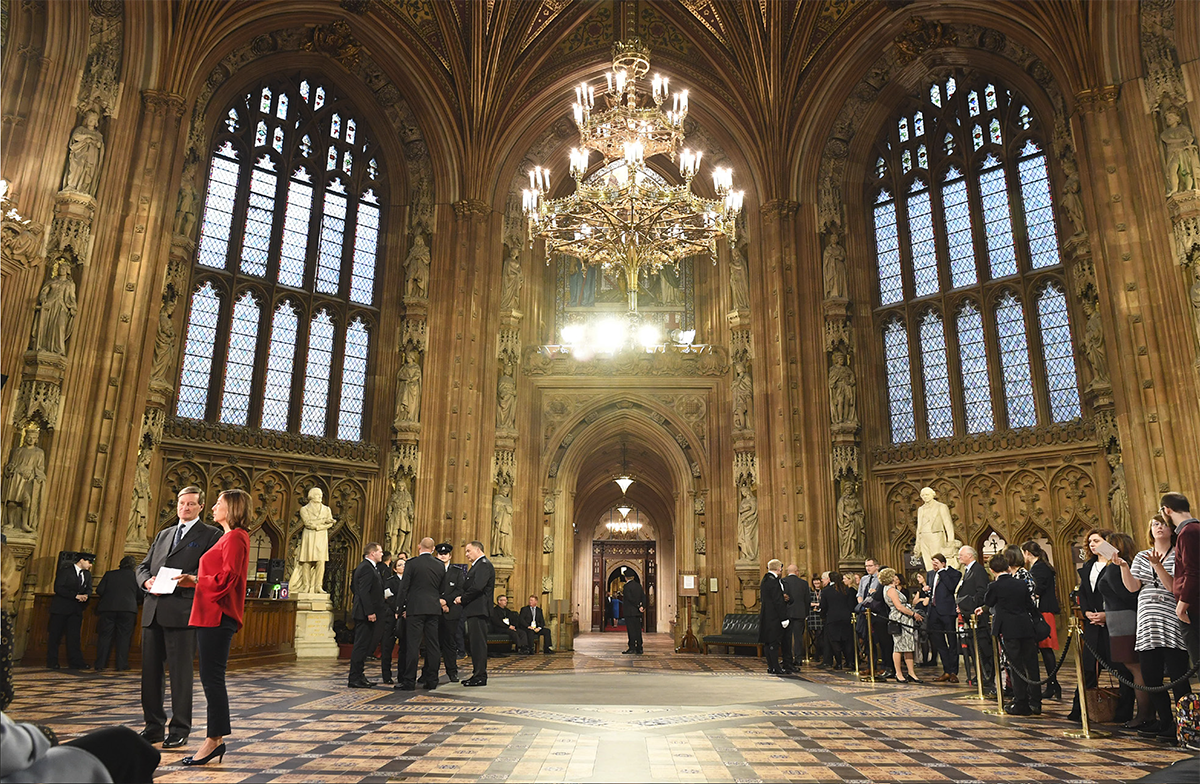 House of Commons, UK Parliament. Photo by: ©UK Parliament / Jessica Taylor (CC BY 3.0) Lessons from Reformers: The United Kingdom brings in citizens to review regulations The Regulatory Policy Committee (RPC) – an independent verification body since 2012 – plays an important role in the United Kingdom’s system of regulatory governance. The RPC is responsible for providing an external and independent challenge of the evidence and analysis in all regulatory proposals. It is composed of eight individuals from outside of government, in sectors such as business and academia. Based on its analysis, the RPC issues red, amber, or green ratings for proposed regulations. Importantly, the RPC is involved throughout the life cycle of regulations. As with regulatory proposals, it also assesses post-implementation reviews and publishes opinions. Today, the RPC serves as a credible actor in the rulemaking process. For instance, government officials generally revise regulations or impact assessments when the RPC is preparing a red rating, as a way of ensuring a green rating alongside the final government documentation. In addition, as of 2015, businesses can now ask the RPC to independently review a regulation’s costs to business if they disagree with the official government impact assessment. In this way, the RPC is an important model for other countries of how to successfully integrate external reviews in a country’s regulatory framework. |
OGP countries are largely not using their action plans to address gaps
Although improving regulatory openness is a common focus of OGP commitments (see “An Overview of Regulatory Governance Across OGP Action Plans” for more details), only two countries have made OGP commitments related to challenging regulations. This is concerning given that citizens cannot challenge regulations in many OGP countries, as documented earlier. The following two OGP commitments provide examples of how other countries can begin to approach this topic. For additional guidance, see Guidance and Standards: Recommendations from the OECD Regulatory Policy Committee.
- Peru looks to involve citizens throughout the regulatory life cycle. Three commitments in Peru’s 2019–2021 OGP action plan aim to improve regulatory governance. The goal of one commitment is to consult citizens on draft regulations earlier in the rulemaking process. Another aims to engage citizens throughout the regulatory life cycle, including during implementation and ex-post evaluation. The third commitment focuses on creating mechanisms for citizens to report excessive red tape and bad regulations through questionnaires that guide discussion toward actionable recommendations. Together, these commitments represent an important push beyond the traditional concept of consultations to instead involve citizens throughout the entire life cycle of regulations.
- Latvia enables online citizen referenda of adopted laws and regulations. Prior to 2015, Latvian residents could initiate referenda only by collecting physical signatures witnessed by a public notary, at their own expense. As part of Latvia’s 2015–2017 OGP action plan, the government created a new online platform through which citizens can initiate (and sign on to) referenda. By the end of the action plan, the platform had thousands of unique users. Although there is a high threshold for a successful referendum that compels Parliament to act (one in ten voters must approve), the e-petition platform is an innovative approach to citizen oversight of laws and regulations.
Guidance and Standards: OECD 2012 Recommendation on Regulatory Policy and Governance (Principle 8) Ensure the effectiveness of systems for the review of the legality and procedural fairness of regulations and of decisions made by bodies empowered to issue regulatory sanctions. Ensure that citizens and businesses have access to these systems of review at reasonable cost and receive decisions in a timely manner.
From the OECD 2012 Recommendation on Regulatory Policy and Governance (Principle 8), available here. |
Conclusion
Formal channels for accountability and oversight – together with legal obligations for officials to comply with procedures for open regulatory processes – are an essential component of regulatory governance, as well as overall state governance. Unfortunately, citizens cannot challenge regulations in many OGP countries. To date, only two countries have put forward OGP commitments to address this issue. More action is needed.
The first step for many countries is to establish a clear legal basis for challenging regulations. For countries beyond that initial phase, an important next step is improving transparency of the review process – such as by publishing information on how to initiate a review, disclosing decisions, and providing justification for those decisions. Ensuring that citizens can also challenge the substance of regulations poses an additional challenge. Concrete measures to consider for these kinds of reforms are listed in the box at the end of this chapter: “Guidance and Standards: Key questions to consider to improve public accountability in regulations.”
Guidance and Standards: Key questions to consider to improve public accountability in regulations The following questions are adapted from guidance issued by the OECD on institutional arrangements for regulators around issues of accountability and transparency in regulatory governance.[25] They also incorporate lessons from the environmental field. Accountability to regulated entities
Accountability to public interest organizations
Accountability to the public
|
Annex: Reforms in Practice
Chapter 1. Accessing Laws and Regulations
CHILE: The country made all the primary laws currently in effect available through a unified website managed by the government (http://www.leychile.cl). Moreover, the current laws are printed in an official gazette, Diario Oficial de la República de Chile.
COLOMBIA: The country has over 10,000 primary laws currently in force that are available to the general public. The laws can be accessed through a unified website managed by the government (http://www.suin.gov.co), as well as in printed form through the national gazette.
FRANCE: There are close to 3,000 primary laws in effect in France. The laws are available on a unified website managed by the government (https://www.legifrance.gouv.fr/).
GERMANY: All the primary laws can be accessed through a unified website managed by the government (www.gesetze-im-internet.de), as well as through websites managed by the private sector (http://www.juris.de). Primary laws are also printed in an official gazette, Bundesgesetzblatt, which is accessible online (https://www.bgbl.de/).
JORDAN: All the primary and secondary laws can be accessed through a unified website managed by the government (http://www.lob.jo). The laws are also printed in the Official Gazette of the Hashemite Kingdom of Jordan, which is published by the Prime Minister’s Office – Directorate of the Official Gazette, and are accessible online (http://www.pm.gov.jo).
MOLDOVA: The laws are available through two unified websites managed by the government (http://particip.gov.md/, http://lex.justice.md). In addition, the laws are printed in the official gazette (Monitorul oficial al Republicii Moldova), which is usually published twice a week and contains all the amendments to the laws and regulations in effect.
Chapter 2. Transparency in Rulemaking
ARMENIA: Armenia develops forward regulatory plans where, in general, action plans on legislative reforms in many fields are adopted either by the government or by the relevant ministry. The government issues an annual action plan that includes most legislative amendments. The plans are published on the government’s website (http://www.gov.am./en).
BULGARIA: Bulgaria develops forward regulatory plans throughout government. According to Article 30 of the Rules of Procedure of the Council of Ministers (CoM) and its administration, draft regulations, which CoM submits to the National Assembly for adoption during its relevant session, are included in governmental legislative plans. Usually a forward regulatory plan includes a list of normative acts, partial relevant regulatory impact assessments (RIAs), or a notification that a full RIA is planned and will be carried out. Forward regulatory plans are prepared twice a year and, after their approval by the Council of Ministers, are published on the government’s website (http://www.government.bg), as well as on the public consultations website (http://www.strategy.bg).
CANADA: As per the Cabinet Directive on Regulatory Management, all regulatory departments and agencies are responsible for providing advance public notice of regulatory proposals. Each year, departments and agencies publish forward regulatory plans on their websites. Plus, biannually (at a minimum), they need to 1. identify and describe expected regulatory changes; 2. provide information on planned consultations; and 3. provide departmental contacts for further information. A list of all forward regulatory plans can also be found at the government’s website (https://www.canada.ca/en/).
COSTA RICA: In Costa Rica, it is mandatory to formulate plans for regulatory improvement throughout the public administration. Each institution is required to develop a plan, outlining regulations of the following year. These plans are available for public consultation, and interested parties are encouraged to provide their input. All the forward regulatory plans are available to the general public through the government’s website (http://www.tramitescr.meic.go.cr).
ESTONIA: Since 2014, different ministries annually present their legislative work plans to the Ministry of Justice. The Ministry of Justice summarizes all the proposals into one comprehensive plan, which is then disseminated through the Ministry of Justice’s website (http://www.just.ee/). The government – as soon as it is elected – approves a government program that is valid for a four-year period and includes the most important programmed legislative activities.
INDONESIA: Indonesia develops forward regulatory plans throughout government through the National Legislation Program, which can be accessed from the House of Representatives’ website (http://www.dpr.go.id). For secondary laws, such as regulations issued by the Investment Coordinating Board (BKPM), forward regulatory plans are developed through internal office memos addressed to all units in the BKPM. The general public can always request the list from the Information and Documentation Office (PPID).
LITHUANIA: Lithuania has several categories of forward regulatory plans. The key legislative initiatives that are expected to be presented during the government’s term in office are listed in the Plan of Governments’ Program Implementation, approved by Resolution No. 167 of March 13, 2017, of the Government of the Republic of Lithuania. Each year, the Office of the Government prepares an annual legislative program. The legislative program is designed in accordance with the proposals submitted by the ministries and approved by the government at the beginning of each year. Based on the annual legislative program, the Government Office drafts a semi-annual legislative program that is submitted to the Parliament at the beginning of the spring and autumn parliamentary sessions. The Plan of Governments’ Program Implementation, annual legislative program, and semi-annual legislative program are published on the Legal Acts Register (https://www.e-tar.lt), while the plans of ministries strategic progress are published on the ministries’ official websites (http://www.tm.lt).
SOUTH AFRICA: The ministries and regulatory agencies in South Africa publish annual reports, outlining future policy developments on a unified website as well as on specialized websites of different ministries and regulatory agencies. The website of the Parliamentary Monitoring Group publishes all the annual reports at a unified location (https://pmg.org.za).
SPAIN: According to Article 132 of Law 39/2015, the public administration must publish a forward regulatory plan containing all the laws or regulatory initiatives that are going to be presented during the subsequent year. Royal Decree 286/2017 regulates the government’s approval of a forward regulatory plan that gathers all the law and regulatory initiatives prior to April 30 of the year before the regulations are enacted. These forward regulatory plans are available to the general public and are published through the government’s Public Transparency Portal (http://transparencia.gob.es/).
Chapter 3. Public Consultation
Consulting citizens on proposed regulations
ARGENTINA: On November 1, 2017, the government of Argentina adopted Decree No. 891, streamlining the functionality of the National Public Sector. The main motivation was to adopt a comprehensive, creative, and innovative approach to addressing regulatory reforms and burdens. The decree emphasizes the importance of consultation, coordination, communication, and cooperation to overcome regulatory challenges. It also establishes the principles of transparency, reasonableness, publicity, free competition, and equality.
CZECH REPUBLIC: There is no formal obligation for ministries to solicit comments from the public, but regulatory agencies do so in practice. The only exception is the Energy Regulatory Office, which is obliged by law to consult stakeholders and respond to received comments. Yet consultations with stakeholders are mandatory for all the legislative proposals undergoing regular impact assessment processes. In these cases, comments are requested through a unified website for all proposed regulations (https://apps.odok.cz/kpl).
FINLAND: Regulatory agencies request comments on proposed regulations from the general public in practice, even though there is no legal obligation to do so. Comments are requested through a unified website (http://www.lausuntopalvelu.fi), as well as several others (http://www.vnk.fi; http://formin.finland.fi; http://www.minedu.fi).
ISRAEL: Ministries and regulatory agencies solicit comments on proposed regulations by publishing them on the government relations website for a period of at least 21 days. Comments are requested through a unified website (http://www.tazkirim.gov.il). Israel’s agencies also request comments through targeted outreach to stakeholders. According to the directive of the attorney general titled “Regulations and Directives” – when a new regulation has substantial implications for a specific group (either social or economic), the relevant ministry or regulatory agency should solicit comments from representatives of that group.
Through OGP commitments, the government has provided a range of platforms and tools for public participation in rulemaking. Consultative processes and interagency collaboration take place via online platforms, such as GovShare, as well as through multisectoral round tables. As part of a 2015 commitment, the government expanded the “tool box” for public participation in government activities. Specifically, the government developed new online tools for polling, community knowledge management, roundtables/fora, blogging, and service providers. The government used the new tools to develop Israel’s 2017 OGP action plan.
ITALY: A new regulation, “Nuovo regolamento Italia 15 settembre 2017,” was signed on September 15, 2017, and entered into force on December 15, 2017. The regulation reformed impact assessments, ex-post evaluations, and stakeholder consultations within the rulemaking process at the central government level (http://www.normattiva.it/). Article 16 of the new regulation states that administrations in charge of regulatory proposals must carry out appropriate stakeholder consultations.
MALTA: Directive 6, issued through the Office of the Prime Minister and legally binding through the Public Administration Act, obliges the public administration to undergo a consultation process for both legislative and non-legislative future initiatives. Comments are requested through a unified website (https://socialdialogue.gov.mt).
MEXICO: According to Article 69(k) of the Federal Law of Administrative Procedure, all drafts must be subject to a public consultation process. The comments are requested through a unified website for all proposed regulations (http://www.cofemersimir.gob.mx). A specialized government body tasked with soliciting and receiving comments is the Federal Commission on Regulatory Improvement (COFEMER).
NORWAY: According to the Instructions for Official Studies and Reports, Article 3-3, it is required that proposals for regulations are subject to a public consultation. The comments are requested through a unified website for all proposed regulations (http://www.regjeringen.no).
As part of an OGP commitment, in 2016, the Norwegian government released a new set of public participation guidelines that apply to all administrative bodies, including municipal agencies. The guidelines focus on early engagement and consultations with affected communities and citizens. Importantly, they also set minimum requirementsAll OGP participating countries are expected to adhere to the Participation and Co-Creation Standards. Each Standard includes clear and measurable minimum requirements that all OGP participating count... for consultations. In parallel, the main online government portal was upgraded to include electronic consultations and centralize records produced by individual ministries in one place.
Responding to consultations
BOSNIA AND HERZEGOVINA: Article 21 of the Rules for Consultations in the Drafting of Legal Regulations (Official Gazette of B&H No. 5/17) requires regulatory agencies to report on the results of consultative processes. Reporting is carried out through preparation of a consolidated response, and the report is made publicly available on a unified website for all proposed regulations (https://ekonsultacije.gov.ba/).
CANADA: Following the publication of the draft regulation in Canada Gazette, Part 1, a high-level summary response to consultations must be included as part of the regulatory impact analysis statement, which is published with the final draft of the regulation in the Canada Gazette, Part 2 (http://www.gazette.gc.ca). Commercially sensitive information is not published, and posted information must conform to privacy requirements established under the Privacy Act. The report on consultation is available through a unified website for all proposed regulations.
DENMARK: The government produces a consolidated response addressing all the received comments; all the responses are detailed and customized. Responses to comments are provided through the following websites: http://www.hoeringsportalen.dk and http://www.ft.dk. In addition, ministries have to send consultation responses and a consultation report to the relevant parliamentary committees.
ESTONIA: The summary of the consultation results is annexed to the decision under deliberation and is forwarded to all interest groups along with the feedback. The summary is also published on the E-Consultation website (http://eelnoud.valitsus.ee/). Reporting on the results of consultations is stipulated by the Rules for Good Legislative Practice and Legislative Drafting, Good Practice of Engagement: clause 6. Usually results of consultations are presented in a table where it is possible to see the list of comments, which organization made the comment, and an explanation of whether and how the comments were taken into account.
THE NETHERLANDS: A report on results of consultations is disseminated as 1) a comprehensive consultation document published on the unified website after the consultation is closed (http://www.internetconsultatie.nl) and 2) an explanatory note that is sent along with a proposed regulation to the Parliament.
NORWAY: For primary laws, bills from the government to the Parliament should contain a summary of results of consultations. For secondary legislations, a summary of results of a consultation is reported in a decree document that is available by request. A comprehensive report is published on a unified website, https://www.regjeringen.no/no/dokument/hoyringar/oversyn-over-hoyringssaker/id546535/). The government guidelines “Om statsråd” state that although it is not necessary to report all comments received from the public, comments from important stakeholders and substantial arguments must be included.
SPAIN: According to the active publicity principle, regulatory agencies publish received comments based on the procedures set forth in Law 19/2003. Every step of a consultative process is recorded and made publicly available. The government prepares one consolidated response addressing all the received comments. The report is published on a unified website (http://www.transparencia.gob.es).
Acknowledgements
Joseph Foti, Chief Research Officer
Authors
Renzo Falla Lopez
Valentina Saltane
Contributors
Sandy Arce
Jessica Hickle
Amelia Katan
Marissa O’Neill
Editor and copywriter
Lora Bolton
Graphic design
Nicol Regan
With generous support of
International Development Research Council, Canada
Department for International Development, United Kingdom
Other OGP donors and contributing members
Special thanks
Liia Hänni, Ott, Karulin, Teele Pehk, Maarja-Leena Saar, Gerti Shella, and Merilin Truuväärt
Additional thanks
Reviewers: Manoucheka Attime, Florentin Blanc and the Regulatory Policy Division of the OECD Secretariat, Sarah Dickson, Paul Maassen, Joe Powell, Tinatin Ninua, Peter Varga, and Cari Votava
About the Open Government PartnershipThe Open Government Partnership (OGP) is a multi-stakeholder initiative focused on improving government transparency, ensuring opportunities for citizen participation in public matters, and strengthen... More
The Open Government Partnership (OGP) is a multilateral initiative of 78 countries and a growing number of local governments that aims to secure concrete commitments from governments to promote transparency, empower citizens, fight corruption, and harness new technologies to strengthen governance. Beyond commitments around transparency and participation in regulations, citizen-centered policy-making is at the heart of the OGP domestic process, which requires member governments to co-create commitments with citizens. OGP also advances legislative openness through the Open Parliament E-Network and promotes deliberation and informed participation in policy-making through a Practice Group on Dialogue and Deliberation. For more information on OGP action plans, see “A Deep Dive into OGP Action Plans.”
